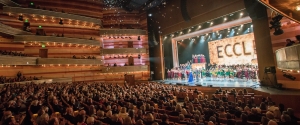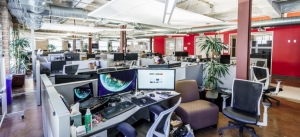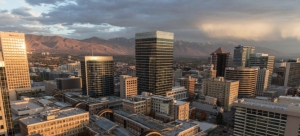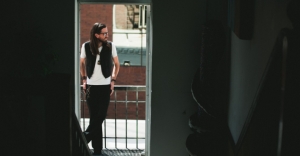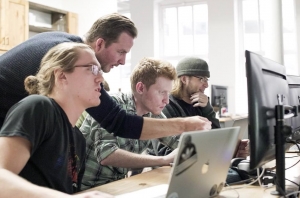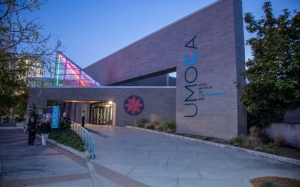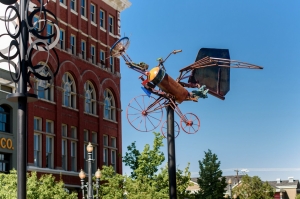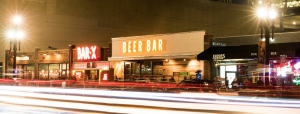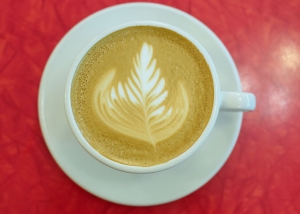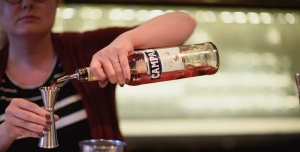DTA Staff
The Eccles Theater - Lighting Up the Downtown Landscape
Something new has taken center stage downtown. In its first months of existence, the state-of-the-art Eccles Theater has already sold 320,000 tickets for shows ranging from The Lion King, Jay Leno and The Book of Mormon to David Sedaris, Bill Maher and Kenny Rogers. drawing people and business into the entire downtown district, attracting its audiences to explore the area, get to know it and stick around a while.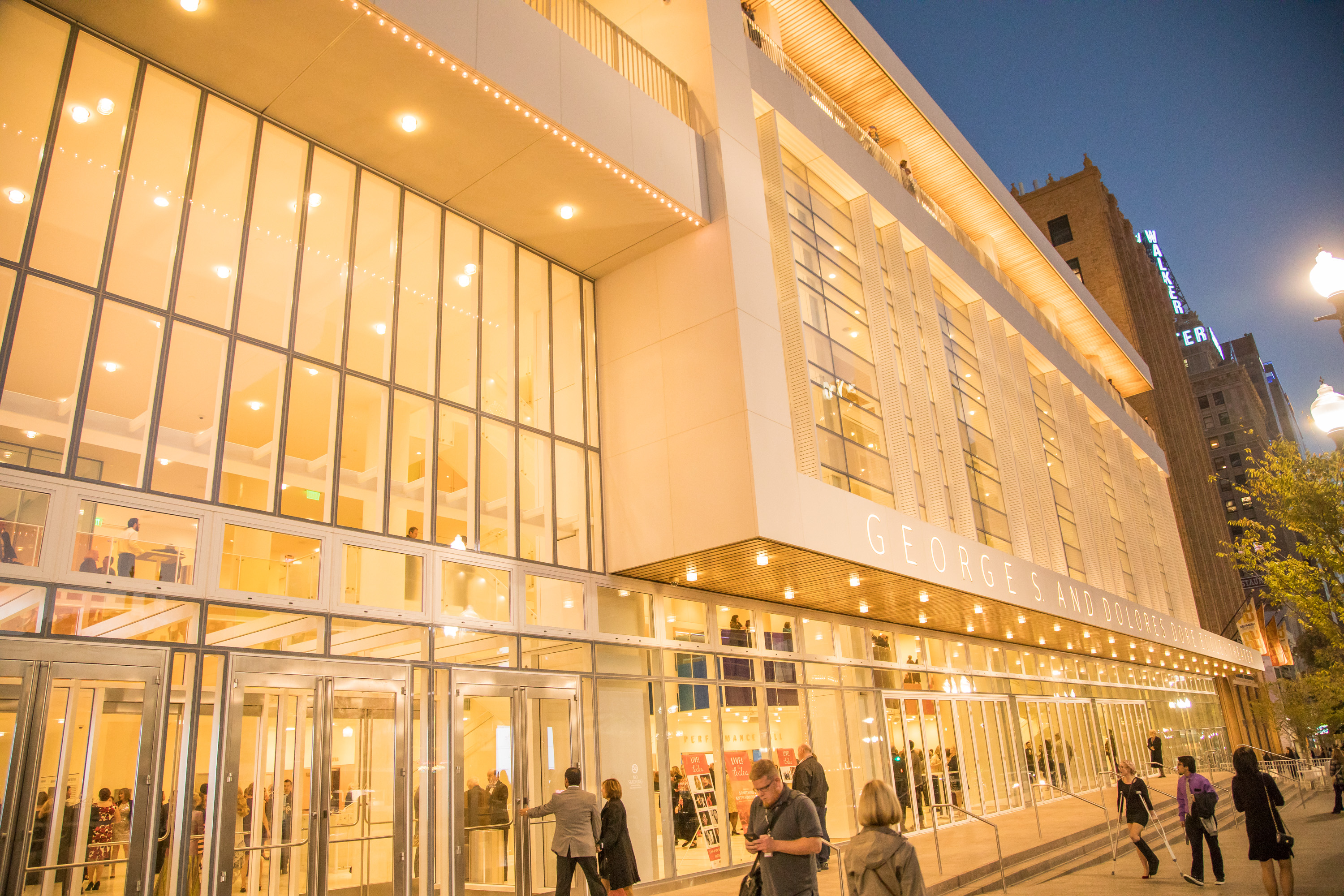
A hardworking catalyst.
“In our initial discussions, we expected a certain number of shows at the theater,” explains Steve Boulay, COO of MagicSpace Entertainment, the company that has partnered with the Eccles to present and produce the theater’s shows. “But in the first nine months of operations, the Eccles Theater has exceeded our hopes for programming, attendance and economic impact.” Performing arts often require an ongoing stream of donations and funding to get by—even in Utah, the state with the highest percentage of its population attending performing arts shows. “But the Eccles theater funds itself, full boat,” confirms Boulay.
Beyond funding itself, the theater is a “shot of caffeine that woke up our downtown,” says Salt Lake County Mayor Ben McAdams. “When people saw the investment that was being made in that theater, others were willing to follow suit and make a similar investment with housing, restaurants and other businesses. It’s more than a cultural offering. It’s a catalyst, an economic driver.” Ticket sales themselves have brought an off-the-charts $21.5 million in revenue, plus $1.3 million in sales tax revenue, plus millions more in local advertising dollars, and pay for stagehands, wardrobe staff and theater employees. The exact infusion of extra revenue into surrounding downtown businesses is tough to track, but local business owners confirm the difference is night and day. “You can just draw a straight line in our case, connecting show nights with the kind of business we do. It’s a direct correlation—we’re abnormally busy till curtain time, and then we resume regular business after that. We definitely feel the effects, in a positive way,” says Rich Parrent, owner and manager of Martine Café. “I actually put a calendar in the kitchen with every Eccles show on it, so we can staff accordingly.”
A fresh crowd comes for the shows—and strolls the streets.
There aren’t just more people in dining booths and barstools downtown—there are new people. Fresh faces queuing up at the ticket office and strolling around with friends and family before and after each show. “An average of 50 percent of the audience in any given Eccles show is attending their first show there. That’s an incredible number of new patrons,” says Boulay. The theater’s colorful mix of show types draw those who already self-identified as Broadway fans—as well as the fans of the musicians who perform there, the science enthusiasts who flock to see Neil deGrasse Tyson, the kids who come for Cinderella, the comedy lovers who come for an evening of standup.
To come to the Eccles, people don’t need to self-identify as “arts patrons.” They are families, people from the suburbs and people who drove half a day to come for a show. Mayor McAdams calls the Eccles a “gateway to the other arts offerings here in Utah. People who may not attend performances frequently might go to the Eccles and then try other venues. They might try the symphony, or go to Pioneer Theatre or Capitol Theatre.” When theatergoers come to a show, it sparks new ideas and an interest in coming back to downtown. They figure out parking, learn which TRAX line to take, try out a new restaurant, and notice businesses they may not have seen if they haven’t strolled the area in a while.
“It’s fun,” says Parrent. “A lot of new people are coming in to Martine, and with the theater, we’re getting people who may not have tried a downtown dining experience before. It’s a great thing to get new customers, and it’s even better to show newcomers what it’s like to enjoy an independent downtown restaurant.”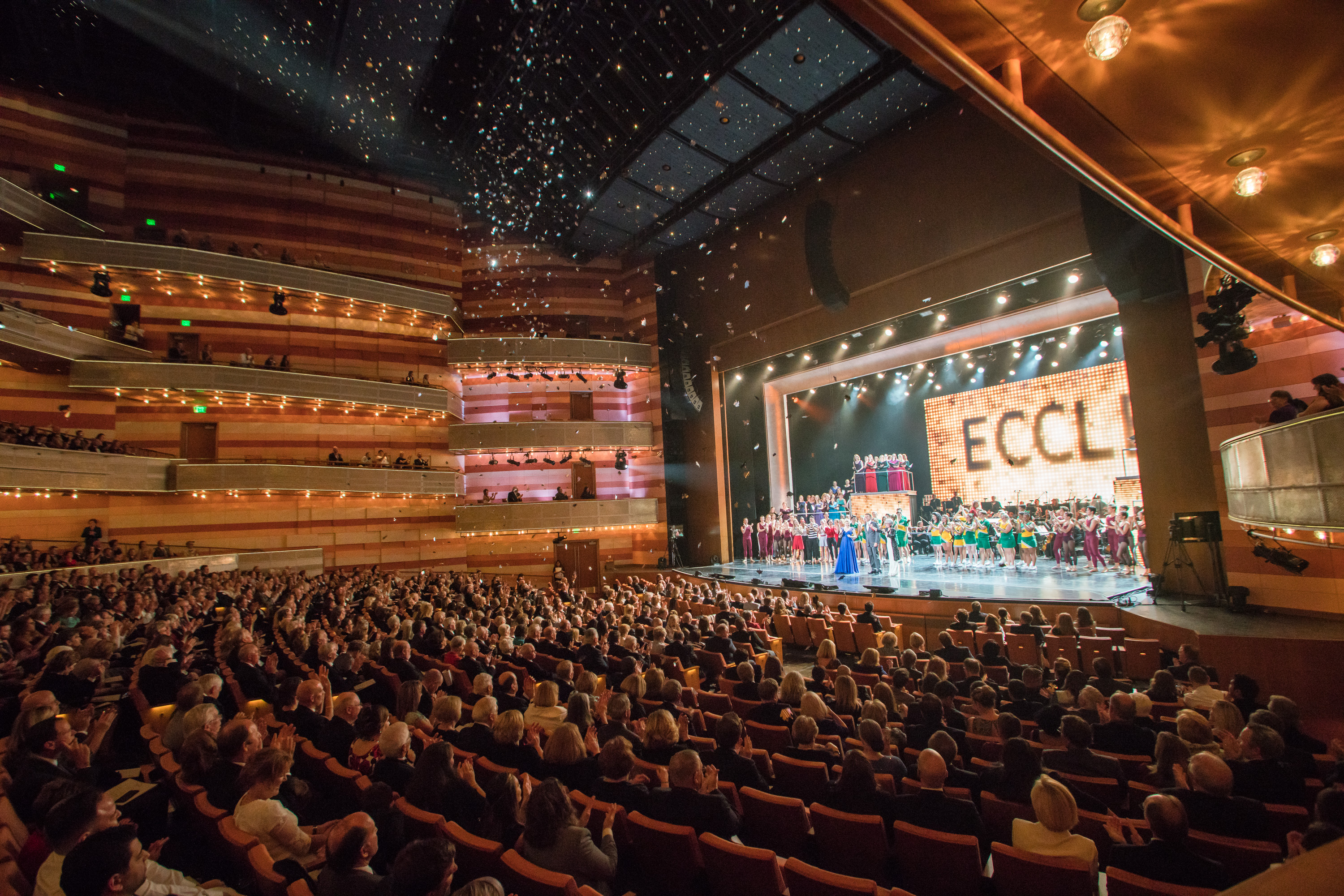
The Eccles takes a seat among its new community.
School-aged kids line up for matinee shows. Friends pose for photos in the theater lobby. Bartenders ask guests about the evening’s performance. Restaurant servers keep showtimes in mind when they bring a check to a table. Couples stroll to the City Creek Center fountain after a performance. The Eccles has found its place as a day-to-day figure amid downtown comings and goings. “Martine’s doing what we’ve always done before, but now that the Eccles is here, it’s become part of who we are,” says Parrent. “Being next door during the theater construction was really hard. But this is the payoff. This is what we waited for.”
The theater has just announced its Broadway shows for the upcoming year—with hotly anticipated heavyweights like Hamilton and Phantom of the Opera on the calendar. There’s already a waiting list for season tickets, which is something both theatergoers and businesses should smile about. It means Salt Lake has fully embraced its new performing-arts player. And the rising tide will lift every (show) boat with it.
What's Old is New in Downtown's Office Options
“Old ideas can sometimes use new buildings. New ideas must use old buildings.” - Jane Jacobs
Along with downtown Salt Lake City’s rich cultural and religious history, our urban center is also home to countless historic buildings and storefronts. From the First National Bank Building that housed Salt Lake City’s first public reading room to the Boston and Newhouse Buildings, designed by Samuel Newhouse (who designed the Flatiron Building in New York), downtown is full of architecture that gives the city a memorable and emblematic skyline, complimented by a backdrop of the Wasatch Mountains. Two of downtown’s iconic structures, the Felt and Clift Buildings, have recently undergone renovations that are breathing new life into the historic structure. At both nearly 100 years old, are among the earliest skyscrapers in downtown and stand as excellent examples of the possibilities of adaptive reuse.
The Felt Building
Named after Charles B. Felt, the Felt Building (341 South Main Street) was one of Salt Lake City’s first buildings to be built of steel and concrete in 1909. Charles Felt was the secretary of Salisbury Investment Company led by O.J. Salisbury, a major developer of Salt Lake City at the time. First conceived as a way to shift the business district to the south side of downtown, this five-story building features an ornate terracotta facade. Throughout its life, the Felt Building has featured a diverse portfolio of businesses, from brothels and cigar shops, to law offices. It contains nearly 58,000 square feet of historic office and retail space. The Felt Building is currently home to several creative technology and professional service firms including DevMountain, one of several software programming schools located downtown.
As the technology industry continues to blossom in downtown, a diverse and creative building stock is increasingly valuable to the urban center. Newer firms moving downtown are typically smaller and are looking for a space to incubate, work and explore the ideas. Historic buildings attract visitors and residents alike, reinvigorating a typically lesser trafficked area.
Renovating old buildings can be a costly undertaking, so Salt Lake City has provided tools for developers and property owners. The renovation of the Felt Building was made possible by a Building Renovation Loan provided by the Redevelopment Agency of Salt Lake. Located on Main Street, right next the Boston Building in the heart of downtown, the fully leased Felt Building serves as a prime example of giving old buildings new life.
Before:
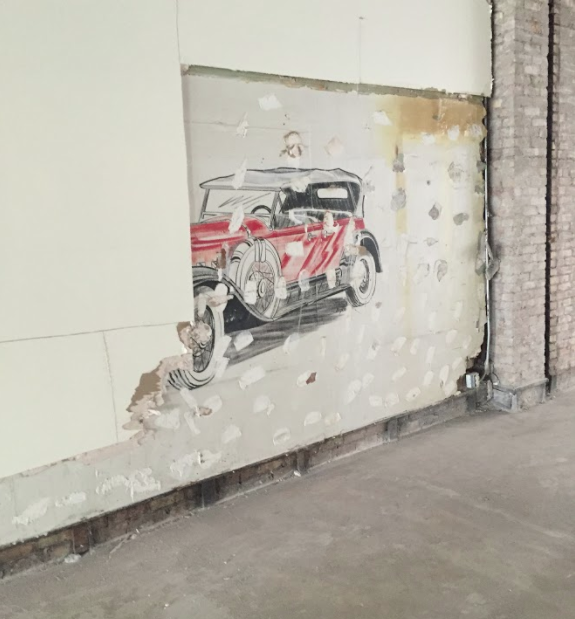
After:
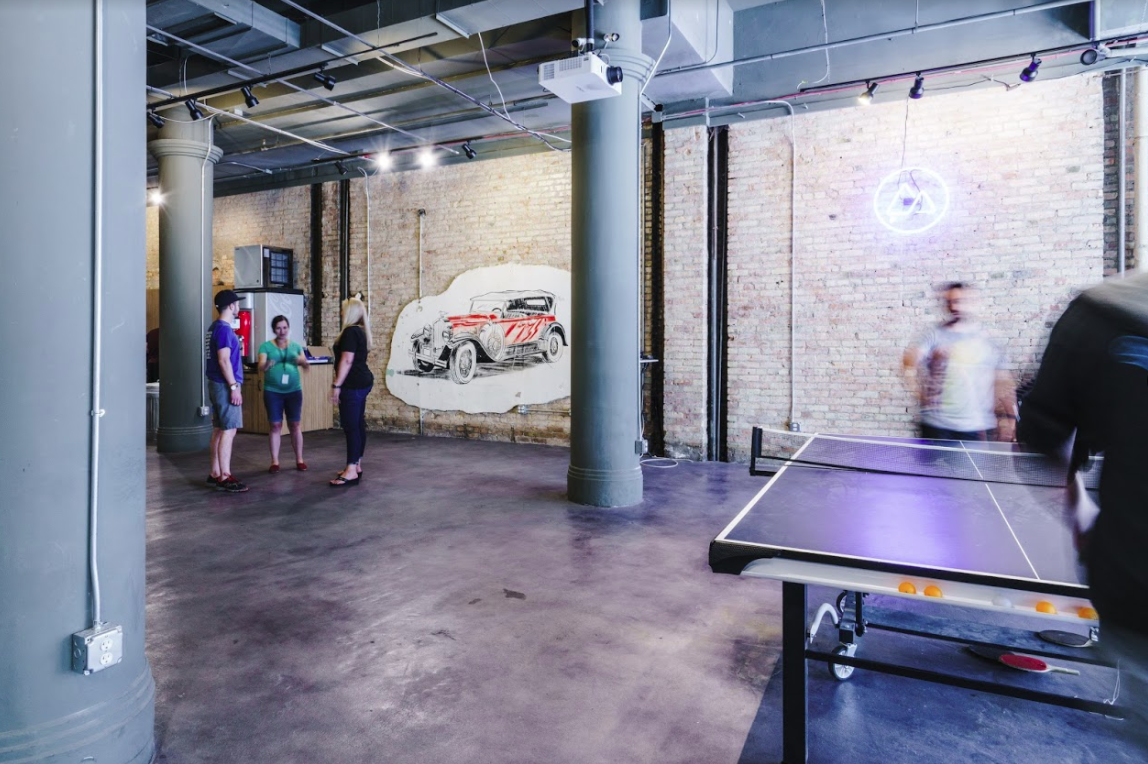
The Clift Building
Francis Clift was a pioneer who traveled to Utah by ox team alongside the Walker Brothers in 1851. After arriving in Utah, he took to mining as a stable source of income, and later became a major financier. Francis Clift died in 1913 and left behind a large estate for his wife, Virture Butcher. She later commissioned the Clift Building (10 West Broadway), which stood on the old site of a popular boarding house in the late 19th century. Today, the eight-story building on the corner of Main Street and 300 South sits as a beautiful example of Second Renaissance Revival Style architecture and was submitted to the National Register of Historic Places in 1982.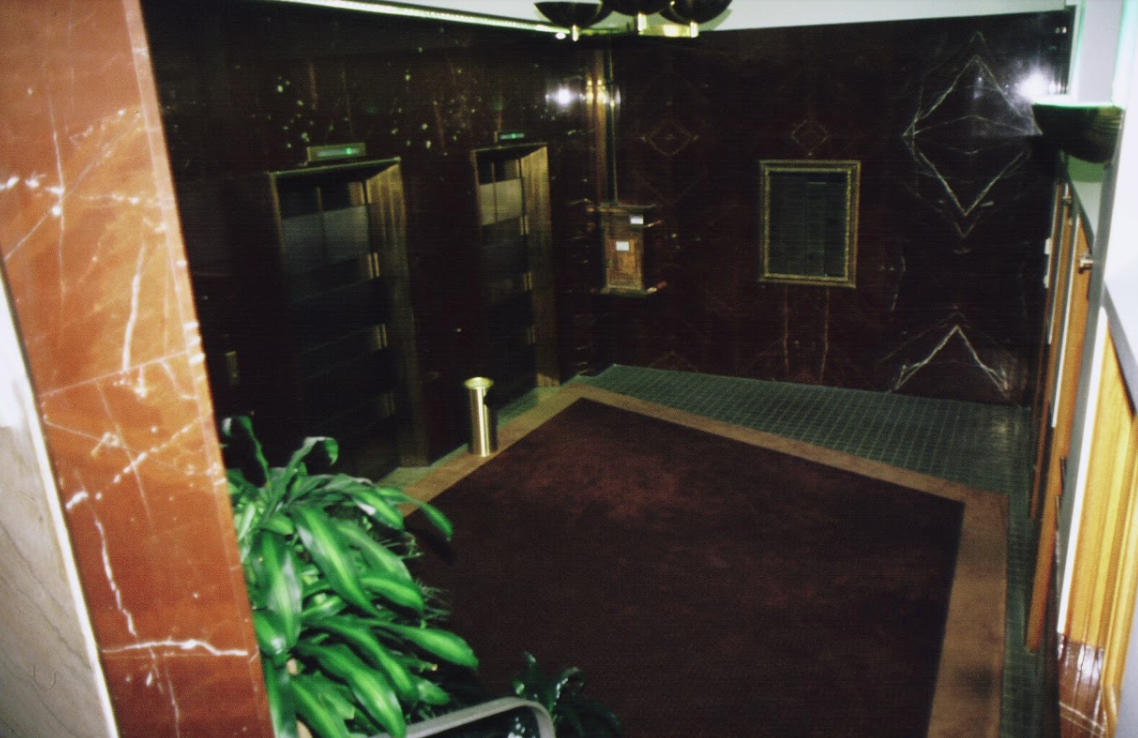
Anchored on Main Street in downtown, the Clift Building sits across from the Judge Building (8 East Broadway) built in 1909. When first erected, the Clift housed businesses like Shubach Optical Company, Western Union Telegraph and the Kinema Theater. At one time, the theater was the go-to place, and a film in the 1920s titled Shipwrecked Among Cannibals, played at the theater for a “record breaking” seven days. The Kinema Theater remained in operation until 1968. Although tenants have come and gone, the Clift Building has remained a stoic icon among downtown buildings. It is one of the largest terracotta faced buildings in Salt Lake City and has exquisite detail. The upper floors of the building are the most ornate, which feature bay windows and intricate Greek pediments.
Although the facade of the building has remained mostly unchanged, the inside of the building has undergone renovations in recent years. To the surprise of the architects and engineers of the project, the Clift Building was not what it appeared to be. After tearing out a false ceiling, workers discovered towering 15 foot ceilings, and even ash and soot residue on the walls and ceiling from a building fire some believe happened when the building was first constructed. Construction in the early 20th century was challenging. Building materials were expensive and often scarce, so when beams were too short, workers and engineers used make-shift materials like railroad ties to complete them.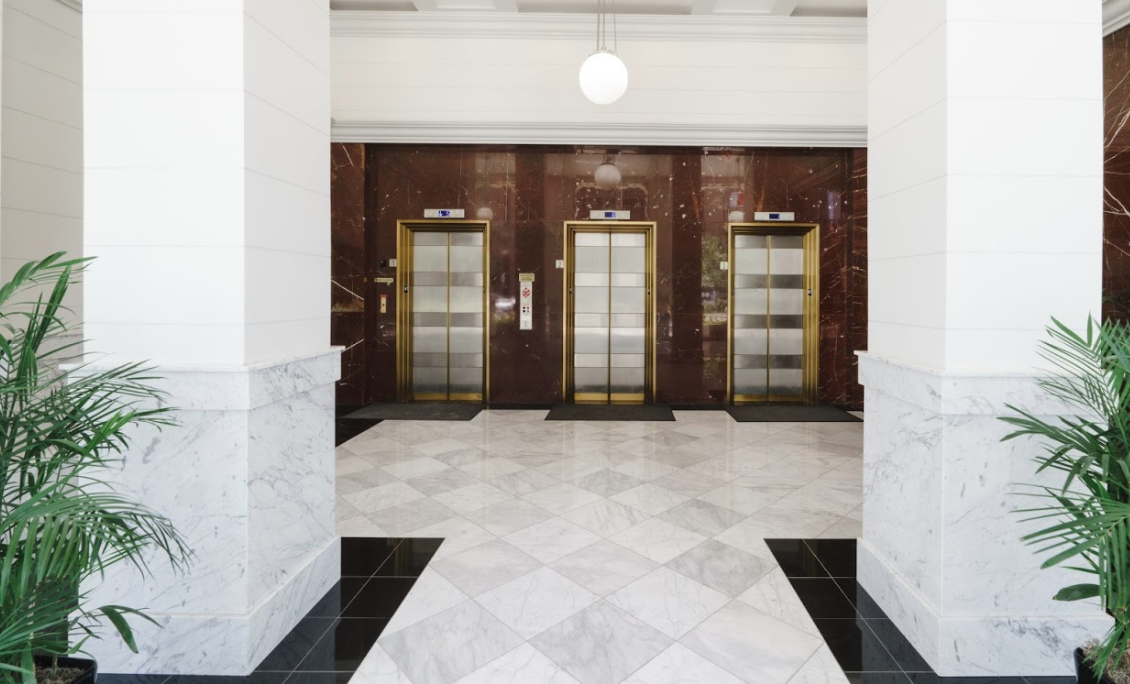
Early in 2017, MGIS signed a 10-year lease on almost 13,000 square feet within the historic Clift. MGIS is an insurance firm based out of the Bay Area.
As downtown continues to attract businesses old and new, historic buildings will be an integral part of that success.
Renovations of historic buildings have become commonplace in Salt Lake City as old buildings provide new opportunity for unique office space for tech firms, law offices and numerous other businesses. This makes the rich historical context of these buildings a coveted asset to many. Although new buildings like 111 and 222 Main offer exceptional office space with a new urban flare, the historic significance and rustic charm of these old buildings is not to be overlooked.
Word on the Street - New for the Holidays
Opening Soon:
Dave and Busters | The Gateway | The Gateway has announced the opening of entertainment and dining chain Dave and Buster’s, which will open its first Utah location Spring 2018.
Industrious | 10 West Broadway | Opening its first location in Utah in the heart of downtown, Industrious offers a redefined coworking space, blending five-star service with stunning design to provide an unparalleled work environment for established professionals.
LaBarba Coffee | The Gateway | They make one of the best cups of coffee in Utah—and maybe the West. And now, they are moving their downtown location to The Gateway. LaBarba Coffee has announced plans to open its newest location in the heart of downtown’s up-and- coming sports and entertainment district, set to open Spring 2018.
London Belle | From those that brought you downtown hits like Pleiku and the short-lived SoCo, London Belle is anticipated to open in the spring. Named after one of Utah’s most high profile madams, it is located near the historic Boston and Newhouse Buildings. Taking the place of SoCo, this upscale bar will feature a diverse menu with unique offerings and craft cocktails.
Midici Neapolitan Pizza | The Gateway | MidiCi has made a name for itself by offering authentic Neapolitan thin crust pizza, baked in handmade wood-fired ovens imported from Italy—right in the center of its restaurants—so that patrons can see exactly what goes into everything they make.
Quarters Arcade Bar | 5 East 400 South | Located in the basement of the historic New Grand Hotel, Quarters is downtown Salt Lake City’s first beer arcade. Quarters will arcade provide a casual, comfortable gaming and social environment paired with craft cocktails and beer as well as familiar and affordable liquor and brews.
Sicilia Mia | According to Salt Lake Magazine, “This is the Italian restaurant, apparently, Salt Lake has been waiting for!” The location off of Highland Drive will be closing, in order to bring the authentic taste of Italy to downtown.
Recently Opened:
Avant Groove Jazz Club and Martini Bar | 122 West Pierpont Avenue | From local entrepreneur and jazz musician John Vecci comes downtown’s dedicated jazz club. Combined with original cocktails and martinis, Avant Groove features an exceptional dining experience to compliment the music and ambiance.
Bagels & Greens | 170 South Main Street | The Bagel Project first started offering it’s delicious bagels at the Downtown Farmers Market several years ago, and a few short years after was able to open their first location on 500 East. Now they are ready to do it again with a second location right in the heart of downtown. The new location brings with it the addition of greens, and the apt new title Bagels and Greens. This is a must eat in downtown SLC!
Borosyndicate Glass Gallery | 60 Exchange Place | More than just your typical head shop, Borosyndiacte is elevating the art of glassblowing and bringing it downtown. In addition to the typical offerings, there is gallery space for artists to showcase hand-blown glass pieces, and other sculptural works.
Last Course | 115 South Regent Street | Deliciou gourmet ice cream and endless other desserts offered at Last Course will be a sure fire way to satisfy that sweet tooth. Check out Last Course on the newly improved Regent Street behind the Eccles Theater.
Nightingale College of Nursing | The Walker Center | Nightingale College was about to bust the buttons at their Ogden location, but as of January 2018, the college will be occupying the fourth floor of the iconic Walker Center.
Peak 45 Exercise | 250 East Broadway | Lagree Megaformer Pilates is the go-to workout, It’s all about time under tension on the spring loaded Megaformer to build your endurance and give you a total body workout in under an hour. Founded by celebrity trainer Sebastien Lagree, the Lagree Method is the latest Hollywood craze hit Salt Lake City. Visit Peak 45 for a Lagree Megaformer Pilates class!
Publik Coffee | City Creek Center |This Salt Lake original is growing...again! Publik Coffee is a small batch coffee roastery that believes in “Community over Corporate, and Planet over Profit”. Located at City Creek Center, this took the place of the Godiva Store.
Recently Moved:
Mercy (Formerly Cathedral Tattoo) | 180 South 200 East
Oasis Games | 275 East 400 South
In Fashion at Library Square
Many downtown regulars might scratch their heads if they saddled up next to a student at Bar X who said they were enrolled in fashion school a couple blocks away. But it’s true: amid the buzz of 400 South and the City Library, the Salt Lake Community College Library Square campus sits, serving as home to the school’s fashion institute, interior design program and paralegal program.
While TRAX trains hum along, library patrons come and go, and diners line up for their favorite Stoneground pizzas, a few hundred students take their courses inside the college’s unassuming yellow building.
Fashion institute adjunct professor Matt Monson says he was invited to teach at the school’s downtown campus because he’d long been embedded in Salt Lake’s art and fashion scene. An artist and Broadway clothing boutique owner, he featured all locally made clothing, jewelry and accessories at his shop. He founded the first Salt Lake Fashion Strolls, a sort of foil to traditional fashion shows—the city street served as runway, boutiques threw open their doors, and students and designers showcased their craft.
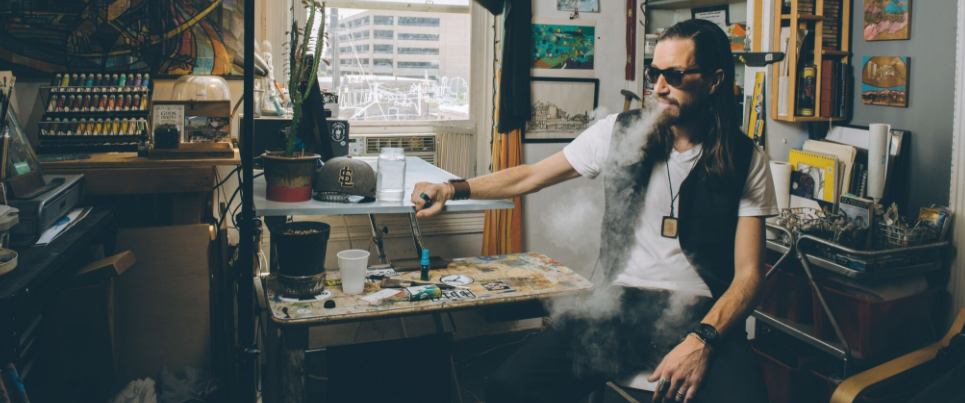
By joining the fashion college’s faculty, Monson was able to represent Salt Lake’s deepest and most authentically local design community. And he had the chance to cultivate it and share his knowledge and network with up-and-coming students.
“If you’re looking for traditional runway-style fashion, go to New York or Paris. But if you want something rooted in Salt Lake’s unique blend of urban and outdoor fashion, this is an incredible place to study,” Monson explains. “In fact, outdoor fashion and fashion that bridges the outdoor and urban world is one of the fastest-growing sectors in the fashion industry. And we’re in the perfect place to create it.”
Living and designing in downtown Salt Lake has given teachers and creators like Monson and his students access to the city’s unique advantages. “It’s been a much more affordable place to live than larger fashion hubs, which allows a lot more experimentation and creativity,” Monson adds. “And the scene is well established enough that we have costume designers, artists and boutique owners within a few blocks.”
Recent fashion institute graduate Julia Sullivan agrees the school’s location was a big help. “I lived downtown the entire time I was in Salt Lake Community College’s fashion program. I could commute to campus on bicycle, and I could jump on TRAX to get to a fabric store or buy other supplies. I could step outside the building to get a coffee or lunch, or go out in the evenings with other students. I never had to worry about bringing lunch. There was always something good to eat close by,” she smiles, noting that the Gourmandise Bakery was a particular favorite haunt.
By being downtown, the campus never felt strictly scholastic. It offered all the necessary resources but was well integrated with the rest of the community.
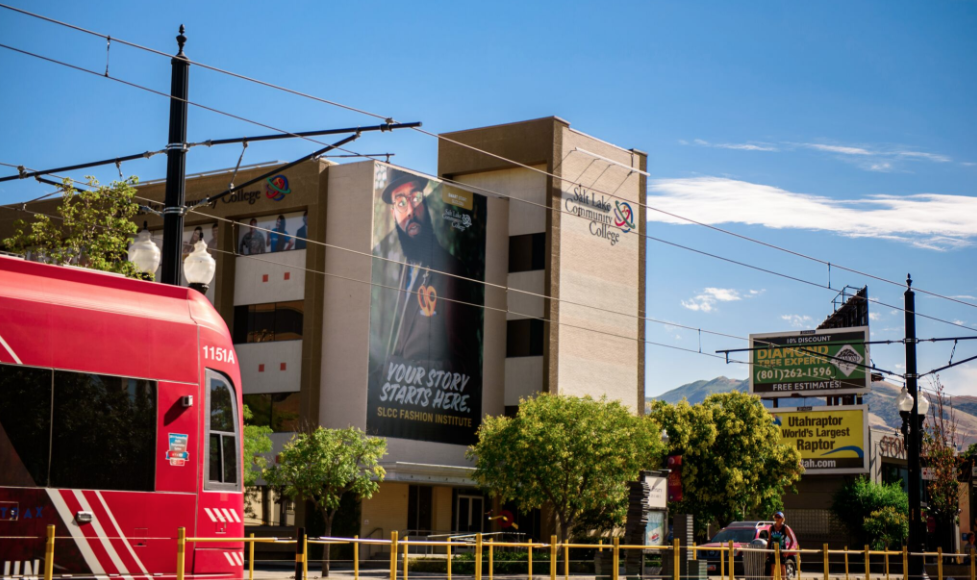
“The thing with a fashion program is that you need to be on campus for quite a few hours in the day, so you have access to the sewing machines and other equipment. You’re not just on campus for class—you’re there the entire time you’re working on anything. It’s a lot of hours in one place, so it’s lucky that we were able to get there so easily on public transit and have so many options for eating and nightlife right outside the building,” Sullivan explains.
Sullivan started attending the program five years ago, without determining at the outset that she wanted to get a fashion degree. She simply had an interest in sewing and was teaching herself to do it with a borrowed sewing machine. A friend mentioned the community college’s downtown campus had sewing construction classes. Sullivan applied, just to improve her sewing machine skills. But she caught the bug and stuck around.
“Pretty soon, I’d taken every class they offered and earned my degree,” she laughs. “It really started out as ‘Oh, maybe I’ll take this class—oh, and maybe that one too.”
Monson explains that many graduates of the program forge successful careers while staying local.
“It’s wonderful to see people committed to following their passion while staying rooted in Salt Lake,” he says. “And it does make some sense logistically as well—we’re within 10 hours of any major western city, and six [driving] hours from the biggest fashion trade show in the world, MAGIC Las Vegas.”
Having a campus downtown helps give students a leg up as they start their own careers post-graduation. “By the time they graduate, they’re well networked with our local boutique owners, who all care about nurturing this community and supporting fellow fashion entrepreneurs.”
He mentions pro skier and clothing entrepreneur Julian Carr as one example of a local designer finding strong support for his brand, Discrete.
“Julian came into my Model.Citizen boutique years ago, looking for boutiques willing to carry his line of beanies. There were only a few carrying his product then, but now, with a groundswell of enthusiasm and support, his brand has blossomed into a full lifestyle clothing line that’s distributed internationally,” says Monson.
The downtown campus’ program boasts a number of local students and artists who have found success and branched out nationally as well after learning, growing and incubating in the Salt Lake scene.
"Andrea Black, a graduate, started Elizabeth Jane clothing, which is doing well in local boutiques and gaining traction nationally too. And the founders of the local shop Zuriick produced some incredible clothing and shoes before going on to their next projects,”says Monson. “And Jordan Halverson just keeps producing cool and unexpected clothing, like in a recent show where it was sequined everything, including luchador masks.”
Monson says he hopes Salt Lake continues to be a lively hotbed of creative and cultural activity that nourishes just these kinds of students and artists.
“It’s really up to us as a community to keep prioritizing culture,” he says. “As long as the downtown community stays affordable and livable, we’ll have plenty of passionate people fueling a thriving creative environment for years to come.”
Coding Back to School
If you aren’t familiar with coding bootcamps, they started cropping up five or six years ago in response to a shortage of software developers relative to the fast-growing tech industry. Since then coding schools have taken off as a lower cost and shorter duration alternative to a four-year degree. And the amazing thing is—they work.
I’m currently attending the Web Development Bootcamp at V School in downtown Salt Lake City. It’s a 12-week, skill-based program where students learn how to build websites and applications. They come out full stack developers, which means that they can code the frontend and backend of a website. The frontend is the look, feel and interactivity of the site; whereas the backend is how data is handled, including servers and databases. It’s wild how much ground can be covered in a 12-week bootcamp when spending every day doing hands-on, applied learning. The wildest thing of all, is that students at V School have a 100 percent job placement rate within six months of graduation. On top of that, many are making the same level of pay as Computer Science graduates from four-year institutions.
Odds are, that last part got your attention. When it comes to getting a job in the tech industry, the people who are hiring are more interested in your skillset than a degree. Above all else, they want to know that you can problem solve and code projects. So, when someone applies to a tech company, it’s common for the company to give the applicant a ‘code challenge.’ A code challenge asks you to solve a problem or build an application. Here’s an example from interviewcake.com: “Write an efficient function that takes stock prices yesterday and returns the best profit I could have made from one purchase and one sale of one Apple stock yesterday.”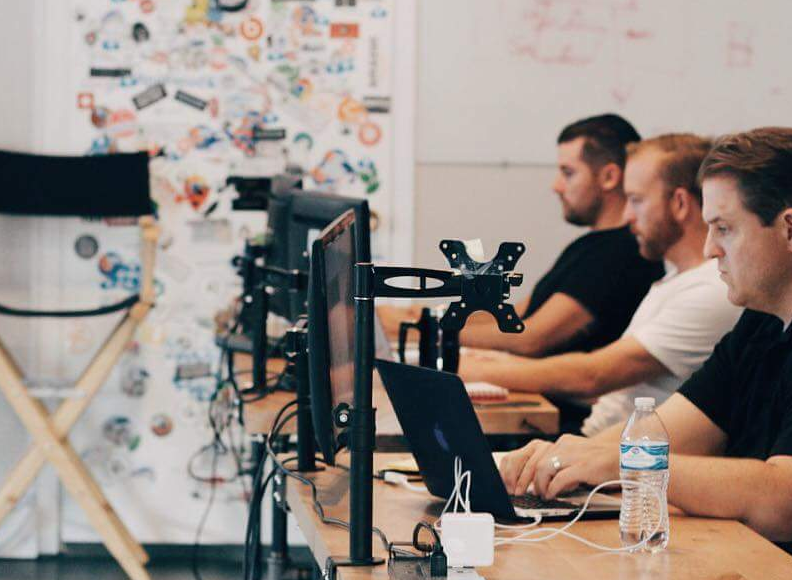
Bottom line, it really is possible to get a software engineering job right out of a bootcamp like this. It’s possible to get one right out of learning in your basement, too—but that’s a lot harder to do. Several V School students spun their wheels trying to learn on their own for years before committing to a bootcamp. The structure of a good bootcamp gets you further and faster with a curriculum that ensures that you know the solid fundamentals needed to write meaningful code that solves problems.
At V School, class runs Monday through Friday from 9 a.m. to 6 p.m. Students can start earlier if they want, working together on problem-solving skills, or even stay late for optional lectures. It’s an immersive environment where you are your only limiting factor. Becoming a software developer in 12 weeks is not a marathon—it’s a sprint. There is no downtime, no filler, no fat. Students should expect to be busy. There is so much to learn every day, and each day builds on the one before. The main difference between learning at a university and learning at a bootcamp comes from learning in an immersive, skill-based environment. There are no long lectures. We don’t write papers. We code. All. Day. Long. At the end of the day, there is no doubt that we are better than we were when the day began.
The early morning instruction and late lectures are available in part because the V School team doesn't have an off switch. The entire staff truly cares about making a difference in students lives. They thrive on seeing students ‘get it.’ It’s been really impressive to find teachers available to answer questions any hour of the day or night, weekday or weekend.
In my class, we have Jacob ‘The’ Evans and Ben Turner teaching. Jacob is eloquent and self-effacing. He has the kind of natural talent for teaching that makes you respect his competence while also being completely entertained. He is at home in front of a class. Ben is the yin to Jacob’s yang. He is soft-spoken and methodical in breaking concepts down. He shines when helping students one on one and has a talent for letting the person he is helping figure out the answer of their question. They both have a true passion and dedication for teaching.
Cohorts at V School are small—there are 12 students in my class. Having a small class size lends itself to quick bonding between students. In my class, we’re constantly joking and razzing each other. It makes it a pleasure to be in class all day, and time passes fast.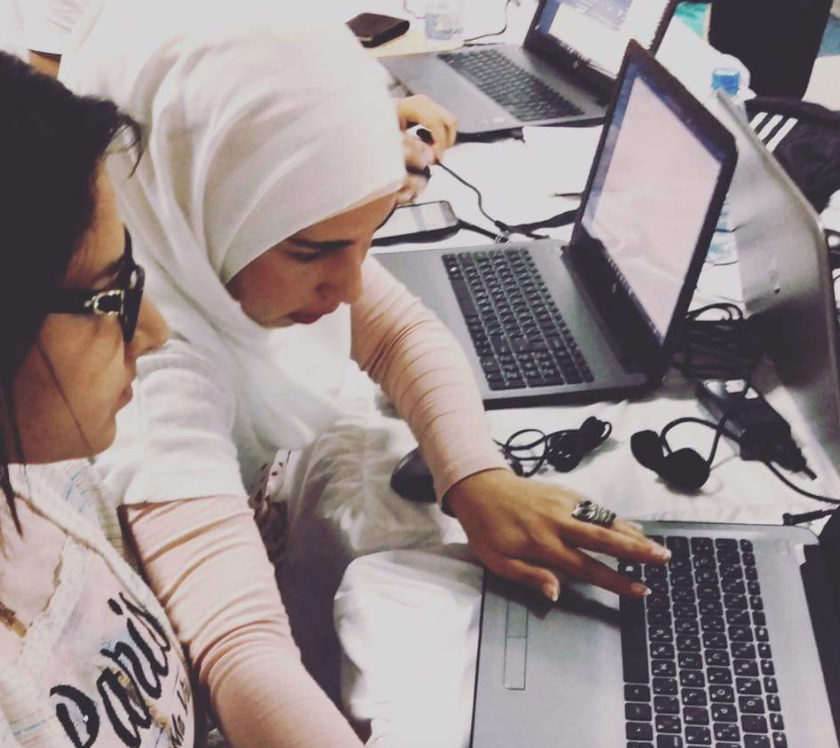
Some students at V School are current college students trying to get ahead; some are recent college graduates who don’t want to work in their majors. Others are looking for new careers, and come from a wide variety of backgrounds. Between cohorts we have a physical therapist, an electrician, a graphic designer, an Uber driver, a social media expert, a musician, a shop owner, and a truck driver—just to name a few. The youngest student is 18. The second week of class, he missed a day and we were all wondering where he was. It turned out he was graduating high school. The oldest student in my class is an entrepreneur around 50 years old who wants to manage his developers better. I could go on, but suffice to say V School is a cross-section of what downtown is: dynamic and diverse. As in anything, the people around you have a huge impact on your experience and having such diverse backgrounds creates an amazingly rich environment. We all have our individual strengths, through which everyone helps each other learn.
We’re all here for the same end goal of career building. This isn’t lost on V School. For an hour once a week, there is a class on career skills. Every week it’s a different topic, covering things like resume writing, creating a LinkedIn profile and interviewing skills. Classes also take trips to Q & A with developers at successful, fast-growing companies. It’s an opportunity to learn more about what development jobs are actually like and what skills are valued. I was impressed that the developers we’ve met let us know that the skills we are learning are in high demand and that there are a ton of jobs available in Salt Lake. From downtown to Silicon Slopes, Utah is booming for tech companies, and a skilled workforce is in demand.
The Impact Hub on State Street, where V School is located, is also filled with Salt Lake tech. It’s a work-sharing space that houses a number of startups and emerging tech companies. It’s packed with interesting people, and also runs many events and mixers. The networking opportunities by having the school there are invaluable. Another perk is the central downtown location, with the vibrancy and high energy a suburban campus lacks. At lunch, we usually wander over to the Gallivan Center to sit under the trees in the grass and eat lunch with live music playing nearby. On Thursdays, food trucks line the streets and there’s a band. When I’m leaving school there are often concerts at the Gallivan, and the shows are free many nights. There are also a lot of great restaurants, theaters, bars, art galleries and City Creek Center nearby.
For me, V School has been a great experience, and I would do it again in a heartbeat. The instructors are excellent, my classmates and I are now friends, and I am learning a phenomenal amount. I love being challenged daily. Whether I feel I do well with the day’s challenge or I don’t, I always come out of the day a stronger coder with new skills. Ok, now back to the coding...
Creating Wonder at Three Beloved Downtown Museums
“I don’t have any numbers to back this up, but I would bet that Salt Lake City has one of the highest numbers of museums per capita in the country,” speculated Clark Planetarium Education and Exhibits Manager Durand “Duke” Johnson as toddlers and tweens bobbed and weaved around him on a typically busy afternoon inside the planetarium’s gallery/lobby space. But as anyone who’s visited one knows, a museum is only as relevant as its exhibits.
Here we introduce you to the people who make relevancy happen at three of downtown Salt Lake City’s most enduring museums: the Utah Museum of Contemporary Art, Discovery Gateway Children’s Museum and the Clark Planetarium.
Jared Steffensen
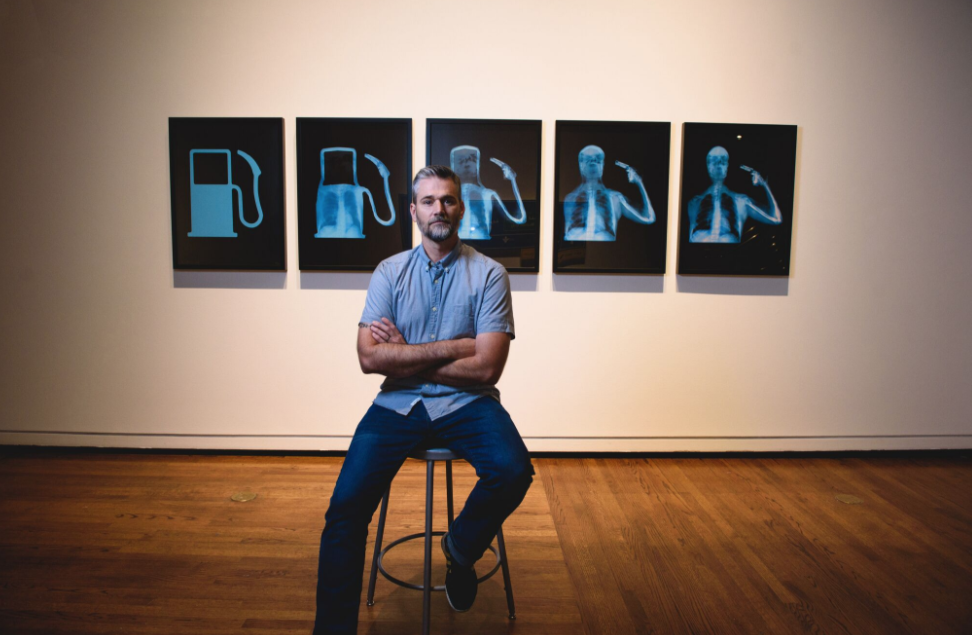
“Like most recent MFA sculpture grads, the first job I took after earning my degree was in construction,” said Jared Steffensen, Curator of Exhibitions at the Utah Museum to Contemporary Art, jokingly. “In all seriousness, it actually felt really good to get back to a place where I was making functional things after being in school so long.”
As it turned out, the building skills he learned while remodeling bathrooms and kitchens came in handy when, in 2012, Steffensen joined the staff at UMOCA as curator of education. “My first big task was building the artist-in-residence program, which included everything from fleshing out what the program would be, to physically constructing the spaces [in the museum] where the resident artists work,” Steffensen said. The result is a program that not only provides resident artists with a rent-free space to create their work, but gives them opportunities for higher visibility both inside and outside the state through professional development workshops, special access to visiting artists and curators, and exhibition opportunities.
“When I finished my undergrad, the opportunities for working artists who made work like I did were so few and far between, I thought I’d probably leave Utah and never come back,” Steffensen said. “This residency is about creating a community for artists here and hopefully elevating the profile of that community nationally.”
Steffensen’s UMOCA job description shifted from education to curating exhibits last October, but the overarching mission of his work—making conceptual art part of the larger conversation—has remained virtually the same.
An exhibit on display at UMOCA now through January 6 that embodies that mission is “Cities of Conviction,” a collection of contemporary art by Saudi Arabian artists. Steffensen curated the exhibit to highlight work that delves into issues common to both Utah and Saudi Arabia, such as the struggle over natural resources, pilgrimage and the tension surrounding commercial development around cultural heritage sites.
Steffensen began developing the concept for “Cities of Conviction” at the suggestion of Dan Mills, director of the Bates College Museum of Art, and Stephen Stapleton, founder of Culturunners, an organization seeking out ideologies common to both the United States and the Middle East. At the same time, UMOCA is also hosting its first international artist-in-residence, Balqis Al Rashed, a conceptual artist and designer born in Riyadh, Saudi, and raised in Beirut for 16 years. While in residence, Rashed is working on “pieces that focus on the creation of meanings, practices, and dichotomies in respect to the collective, identity, and the self.” Her work is featured as part of “Cities of Conviction.”
“We feel this exhibit really hits the mark of making conceptual art part of a bigger conversation while creating a place for a largely misunderstood community to have a voice at the same time,” Steffensen said.
Travis Reid
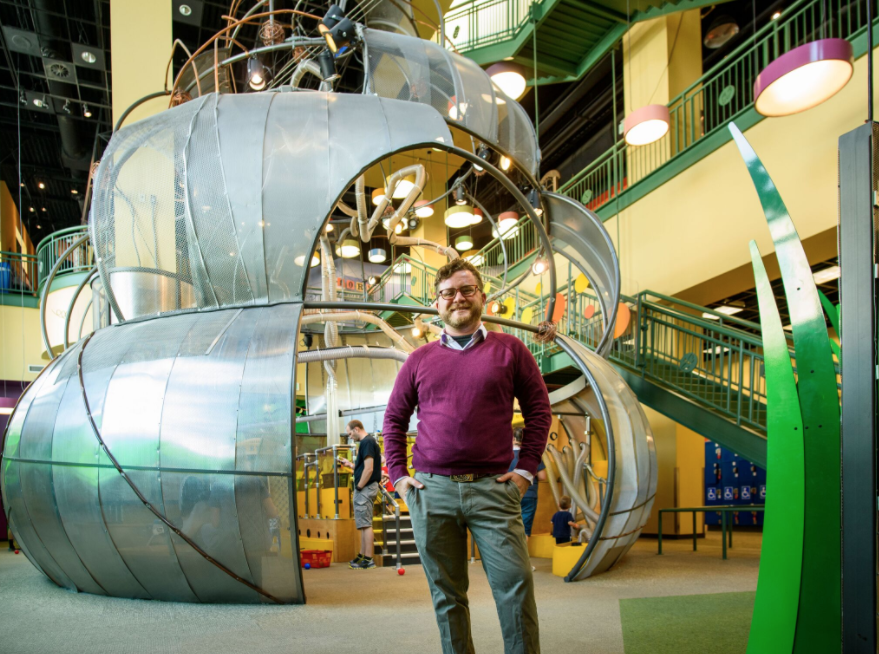
Over at Discovery Gateway Children’s Museum, Senior Manager of Creative and Exhibits Travis Reid’s easy manner and deliberate speech are indicative of his north-Texas roots. “I was born and raised in Dallas where we like to say ya’ll quite a bit,” Reid said with a grin. After earning a BFA in sculpture and then an MBA in project management, Reid took a position in his home state with Billings Productions. There he designed, developed and delivered exhibits to museums throughout the country. “I got to come to Salt Lake City when I worked on a dinosaur exhibit for the Hogle Zoo and thought it was so beautiful here,” he said. And then in April 2017, when his current position opened at Discovery Gateway, Reid jumped at the chance to move to Utah. “I’ve always been attracted to the idea of learning through play, and so this job has felt like an ideal fit for me,” he said.
Part of Reid’s vision for Discovery Gateway is a focus on interaction and use of technology. “The smartphone was yet to come on the market when this museum opened [at the Gateway] 10 years ago. There’s been a boom in technology since then. The possibilities available now to create even better exhibits are endless,” he said. To address this goal, Reid is embarking on a thorough inventory of existing exhibits to help him formulate a long-view plan for improvements and new exhibits. “I want to find out what’s working and why, and focus our efforts on a kid’s perspective,” he said. The yardstick he’ll use to critique Discovery Gateway’s existing exhibits will, of course, include the gold standard for interactive museum exhibits: how appealing it is to multiple users, does it result in multiple outcomes, and can it be accessed from multiple sides, among other parameters. But Reid also plans to focus on the larger, thematic picture by analyzing how the museum’s different exhibits draw children through the entire space. “I believe that museums across the US now incorporate and recognize the benefits of using hands-on interactive exhibits, which was always a key design feature of children's museums." Reid said.
And while Reid looks forward to working with the museum’s staff to make Discovery Gateway’s exhibits even better (“Everyone here—from the graphic designer to our on-site carpenter to the development, and marketing departments—works really hard to bring every exhibit to life. It’s very much a team-oriented atmosphere,” Reid said.), several new experiences are already in the pipeline, with rollouts planned to coincide with the museum’s 40th anniversary in the fall of 2018. Those new exhibits include a refurbished and updated Water Play exhibit and a new climbing-based activity in the museum’s Garden gallery. “I’d love to create something that allows kids to experience that gallery using gross-motor and decision-making skills, ultimately being rewarded with seeing the museum from a unique viewpoint,” Reid said.
Durand "Duke" Johnson
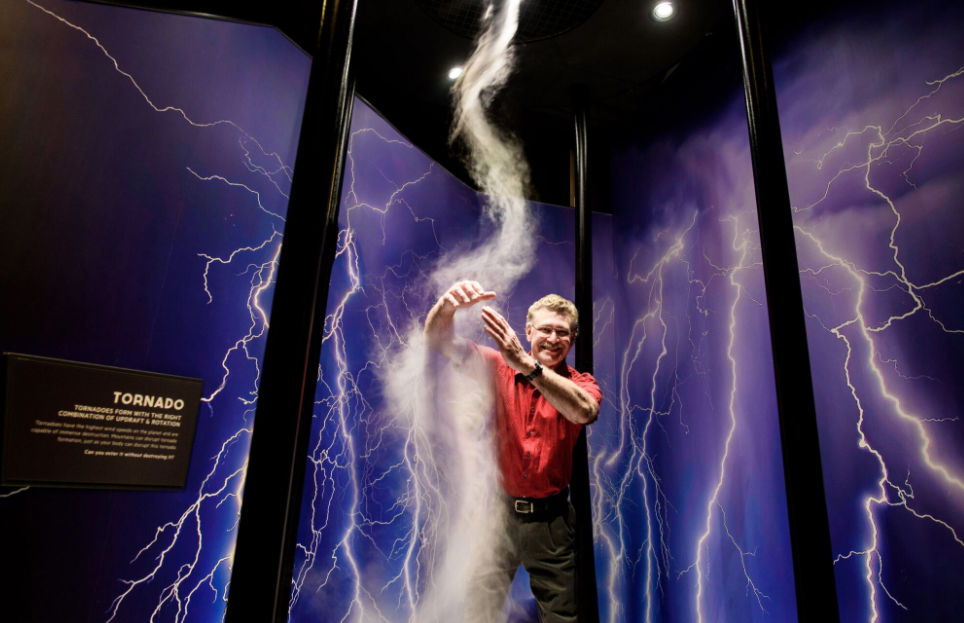
Though the words fall short of capturing the blood, sweat and tears involved in the actual process, resourceful creativity is a good place to begin in describing how Clark Planetarium Education and Exhibits Manager Durand “Duke” Johnson headed up execution of the Clark Planetarium’s bevy of new exhibits, unveiled last October. There’s the weeklong journey to Trinidad, Colorado, that Johnson and Thanksgiving Point’s Cliff Miles embarked on to bring back what’s now the largest on-display specimen of the 4-million-year-old Cretaceous-Paleogene (K-Pg) boundary (a thin band of rock dating to the extinction of the dinosaurs) in the world. Or there’s the hours of trial and error that went into creating the tornado exhibit, flanked by storm photos Johnson took himself. “All the staff went WAY above and beyond the call of duty to enable us to pull off the [museum’s] refresh project,” Johnson said.
Johnson, grew up as a “North Dakota farm kid,” taught high school math and was a planetarium director in North Carolina prior to relocating to Salt Lake City 14 years ago to manage exhibits at the Clark Planetarium. What fuels his enthusiasm to, say, hit the road for a week to dig up a piece of rock? “I get to pick one of three or four hats to put on every day,” he said. “And it’s all related to science and engineering, which, at the end of the day, is what we want to encourage others to do through these exhibits.”
In addition to the K-Pg rock and the tornado simulator, some of the new exhibits on display now as part of the planetarium’s $3.5 million refresh include a digital lunar lander simulator and the Defend the Earth video game where users protect our planet from an asteroid field—both of which were designed, built and perfected by planetarium staff members Jesse Warner, Chris Roberts, Cody Lavery and David Meinzer.
In fact, according to Johnson, the Clark Planetarium is among very few institutions of its kind to create and develop its own interactive digital exhibits, an expertise that Johnson hopes to offer to other museums to support the planetarium over the long term. “Last fall’s relaunch was more of a beginning of what’s to come rather than an end of something,” he said. “Anywhere you see an open space in the gallery is where something new will go. We plan to bring more effort to bear on this experience by offering more hands-on programming, partnerships with other local institutions, and more outreach.”
Flying Objects
Downtown is made more whimsical, interesting and unique through arts and culture. Our one-of-a-kind murals, installations and sculptures all add to downtown’s colorful presence.
We’re privileged to have a plethora of public art downtown—art free and accessible to everyone— supported by both private and public entities. Utah’s capital city has a long-standing tradition of financially supporting artists and the arts, in all forms, to add to the city’s diversity and vitality. Public art, along with architecture, landscape, and people, create a unique identity distinct to our place. Recognizing the social and economic benefits realized through an aesthetic experience in public spaces, Salt Lake City’s Public Art Program’s purpose is to add high-quality, site-specific artists’ work to natural and built environments. In fact, the formalized tradition of allocating 1 percent of eligible City project funds for commissioning artists for services and site-specific artwork to be integrated into new construction projects stretches back to 1984, when the City adopted a percent-for-art ordinance.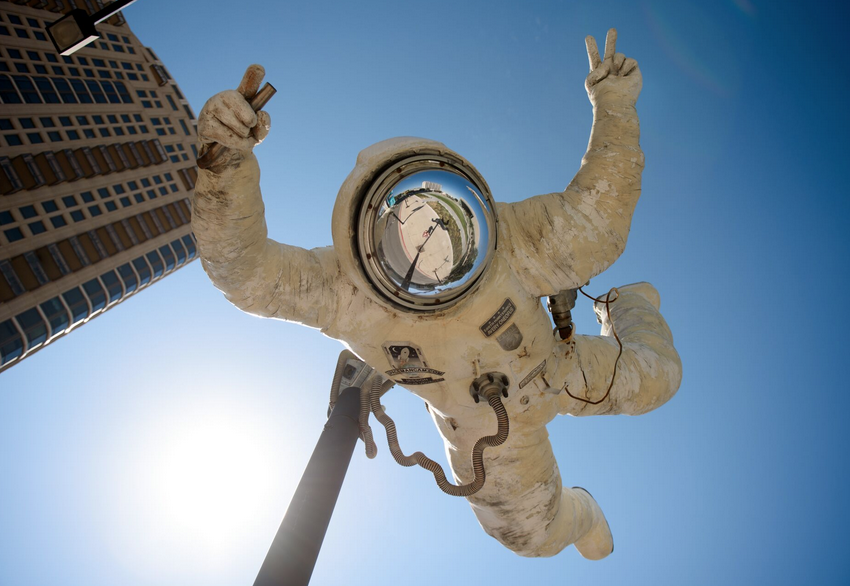
“The City’s long standing dedication to hiring and promoting local artists using a solid public art selection process has encouraged many artists to stretch their abilities and styles to the three dimensional,” says Kristin Beck, the Downtown Alliance director of urban activation. “The accessibility of these public art pieces engages and exposes the public in ways they would not have experienced otherwise.”
In addition to funding through the Percent-for-Art ordinance, the program partners worked with the Redevelopment Agency of Salt Lake City (RDA) to integrate public art in city-wide project areas. In 1990, the Board of Directors of the RDA approved and authorized a Percent-for-Art provision to be incorporated in development contracts executed by the RDA. In addition, many additional RDA public art projects are managed by the Salt Lake City Arts Council under the direction of the Salt Lake Art Design Board—a five-member mayoral appointed body. Since that time, the Arts Council has successfully partnered with the RDA on several projects in many districts with new opportunities arising on a regular basis.
One of the most recognizable and celebrated projects, The Flying Objects series, began in 2005 when downtown Salt Lake City was under considerable construction for City Creek Center, one of the nation’s largest mixed-use downtown redevelopment projects. The project was designed to stage a series of temporary, rotating sculptures, installed in three locations to add shape, color and interest to the streetscape through a curated series of sculptures in a range of styles and materials.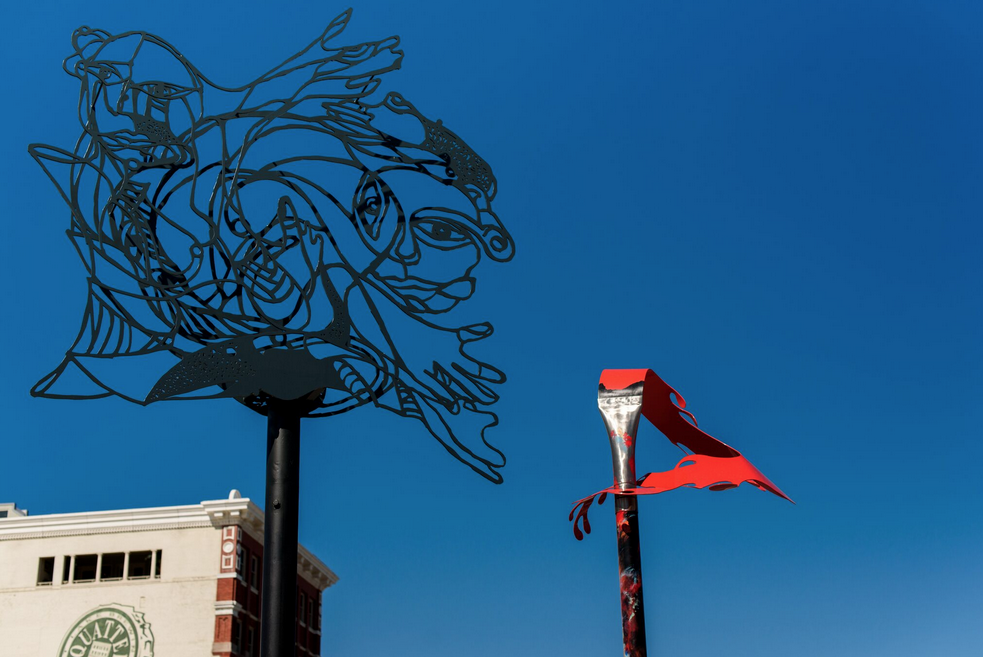
“The Flying Objects series has been cherished in our community and valued by our visitors,” says Beck. “It’s offered many local artists the opportunity to participate in a commissioned public art process and has garnered them an amazing amount of exposure.”
Since 2005, the Flying Objects project offered more than 45 established and emerging Utah artists an opportunity to participate in a temporary public art project and create one-of-a-kind sculptures. Each of the first four series was installed for a period of two to three years.
If there was ever a Flying Object you were particularly fond of—say the UFO, the “paper” plane, or the man on the trapeze—feel free to reach out to the Salt Lake City Arts Council because they could be yours! After each object’s temporary run above the street, they were returned to the artist to sell, repurpose or enjoy. Many have been given new homes in public and private spaces, but some are still available.
After the fourth round of Flying Objects was completed, it was determined that the fifth iteration of the series would be a final, permanent installation. And in April this year, 18 new sculptures were erected above the 300 South medians from 400 West to 300 East. The new series has already begun to weave itself into the cultural fabric of our community and will be an amusing and beloved chapter in downtown’s evolving story for years to come.
Word on the Street - Comings, Goings, and Updates
The newly revamped Regent Street is set to be a downtown destination for years to come. Several storefronts along the street will soon be home to an eclectic mix of fast casual, fine-dining and first to market concepts in downtown Salt Lake City.
Major improvements are also happening at the Vivint Smart Home Arena, home of the Utah Jazz. The $125 million in renovations have just finished and will include several local eateries throughout the arena.
Fireside on Regent | 126 Regent Street | Open - Fireside is a fine dining destination with a neighborhood bar destination feel. The restaurant focuses on Central Italian wood fire pizzas and house extruded pastas - with a commitment to supporting local farmers and sustainable ingredients.
Pretty Bird | 146 Regent Street | Opening Soon - Chef Viet Pham of Forage SLC and Iron Chef America Fame is set to open a restaurant dedicated to the perfect piece fried and chicken. Pretty Bird is expected to open late Fall 2017.
Last Course | Regent Street | Opening Fall 2017 - With gourmet ice cream and endless other desserts, Last Course will be a sure fire hit in downtown.
Maize Homestyle Tacos | Regent Street | Opening Fall 2017 - Making the jump from food truck to brick and mortar should be no problem for this Salt Lake City favorite! Maize has been bringing delicious tacos to the streets on delicious hand-made corn tortillas since 2015 throughout the Salt Lake Valley!
Pastries ‘n’ Chaat | Opening Fall 2017 - Pastries ‘n’ Chaat is a fast casual restaurant focused on bringing savory and sweet delicacies from India.
Vivint Smart Home Arena | 301 South Temple | Fall 2017
R&R BBQ - R&R BBQ is a funky counter-serve shack dishing out BBQ meats by the plate or pound from world champion pit Masters Rod and Roger Livingston. With restaurants in South Jordan, Lehi and Salt Lake City, be sure to check them out at the next Jazz game for your BBQ fix.
Cubby’s - After opening in Provo in 2012, this popular eatery has been met with enormous and continual success. If you are looking for a perfectly balanced meal at a great price, Cubby’s tops the list!
Maxwell’s - If authentic New York thin crust pizza is what you’re looking for, you have come to the right place.
El Chubasco - Having consistently won Park City’s Best Mexican Restaurant for the past 4 years, El Chubasco is ready to show Salt Lake City what it’s missing. Along with over twenty varieties of salsas made fresh daily, house specialties include big burritos, spicy shrimp “camarones a la diabla,” street tacos and the best chile rellenos this side of the Rio Grande.
J Dawg’s - Sometimes there is nothing better than a plain ol’ hot dog with classic condiments, but J Dawg’s is way more than just that. With any topping imaginable, and unlimited napkins, this is a sure fire way to fill your belly with one (or three) tasty hot dogs!
Cupbop - This is hand’s down, one of Salt Lake’s most recommended good eats! With several locations all over the Wasatch Front, if you haven’t had an opportunity to try Cupbop, your chances of snagging a delicious bowl of Korean BBQ just got a little better!
Hires Big H - Most known for their delicious Root Beer this classic burger-and-fries joint is a true Utah original. Started in 1959, this eatery is far from losing its charm and appeal, and after a new location opens inside the Arena it will be even harder to imagine Utah without it!
Zao Asian Cafe - With fresh and quick eats, Zao Asian Cafe delivers dead on! Highlighting tastes from Southeast Asia this is sure to be a good addition to Vivint Smart Home Arena!
Other Openings / Happening Soon
Bagels & Greens | 170 South Main Street | The second rendition of the Bagel Project is finally opening, and in downtown nonetheless!
Sicilia Mia | According to Salt Lake Magazine, “This is the Italian restaurant, apparently, Salt Lake has been waiting for”! The location off of Highland Drive will be closing, in order to bring the authentic taste of Italy to downtown.
Rib and Chop House | 140 South 300 West | Casual eatery offering premium steaks, fresh seafood, and award-winning baby back ribs.
MonkeyWrench/Bolt Cutter | 53 East Gallivan Avenue | Tasty treat or tipsy drink? At MonkeyWrench you don’t have to choose! If the full service restaurant is the sundae, then the side dessert bar is the cherry on top.
Avant Groove Jazz Club and Martini Bar | 122 West Pierpont Avenue | Whether it be live theater, a jazzy quartet, or even just a drink, you are sure to find it at Avant Groove.
Closing
Judge Cafe
Lamb’s Grill
Hot and Happening
Take a stroll through downtown Salt Lake City and you will find the coffee movement is alive and well. Salt Lake City offers a wide variety of destinations to enjoy a cuppa joe.
Eva’s Bakery Boulangerie (155 South Main Street)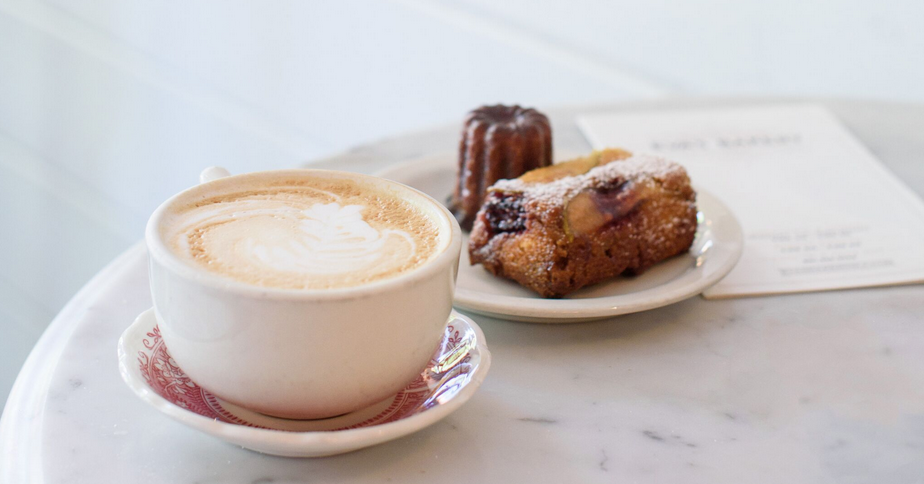
Just a few steps south of City Creek Center, past the shiny new Eccles Theater you will encounter a bright blue storefront and a wonderful French bakery experience. Featuring an amazing staff, Eva’s coffee is as hot as it fresh. Brewed and served with a smile and lots of love, plus an assortment of delectable French pastries for the choosing.
Three Pines Coffee (165 South Main Street)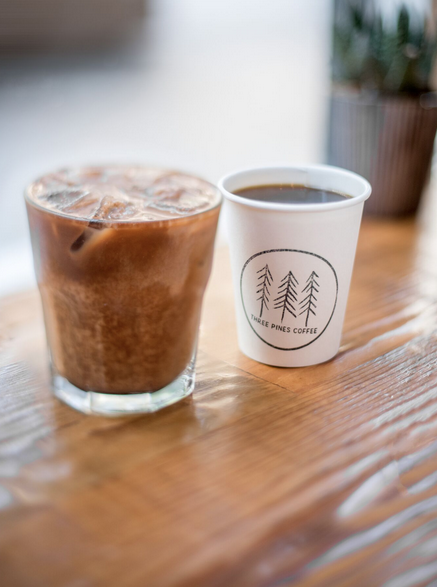
Keep heading south on Main and you will find yourself in midst of Three Pines… Coffee that is. Owner’s Meg Frampton and Nick Price started their Salt Lake City coffee venture from a cart and have grown into a fine establishment. Speaking to Meg’s sister Jade, who helps with day-to-day operations, “Three Pines focus is on quality and simplicity. We want our patrons to enjoy the experience and not be distracted by a complicated menu.” Coffee is sourced from Heart, a small branch coffee supplier out of Portland. Try the ‘Beehive Baller,’ a daily brew, hot or cold with chocolate, vanilla and delicious house-made almond milk.
Nostalgia (248 East 100 South)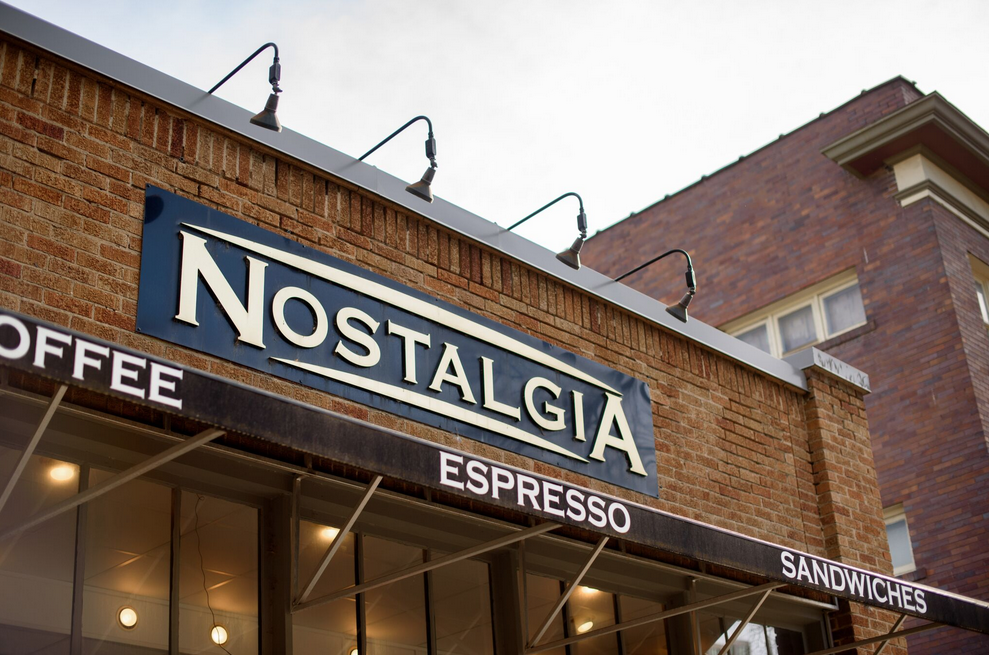
Venture up 100 South and you’ll find a quaint neighborhood-feel coffee house with a fitting name: Nostalgia. The space is a regular spot for work-from-anywhere locals and students due to their super fast Wi-Fi. Barista Shayli Hone made sure she pointed out the unique local art on the walls, and let me know the coffee is sourced locally from the Meridian Coffee Co. She also suggested I try the ‘Van Halen,’ a delicious vanilla hazelnut latte. Like the hit 80’s song, it made me want to “jump!”
Coffee Garden on Main (254 South Main Street)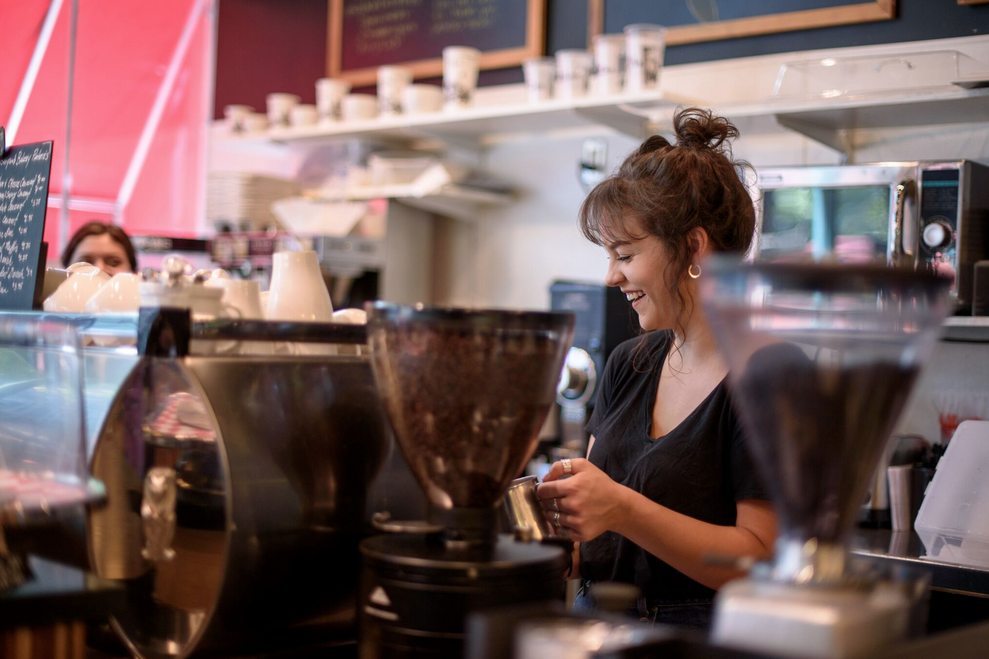
Located in the Eborn book store on Main St., Coffee Garden on Main sources its coffee from local Caffe Ibis out of Logan, UT. According to barista Saorise Johnston-Dick, they serve a lot of lattes to a loyal customer base of office workers and artists alike. When asked about her constant smile, Saorise said, “This is a great local business, and they do a great job supporting other local vendors as well as their employees.”
Caffe d’ bolla (249 East 400 South)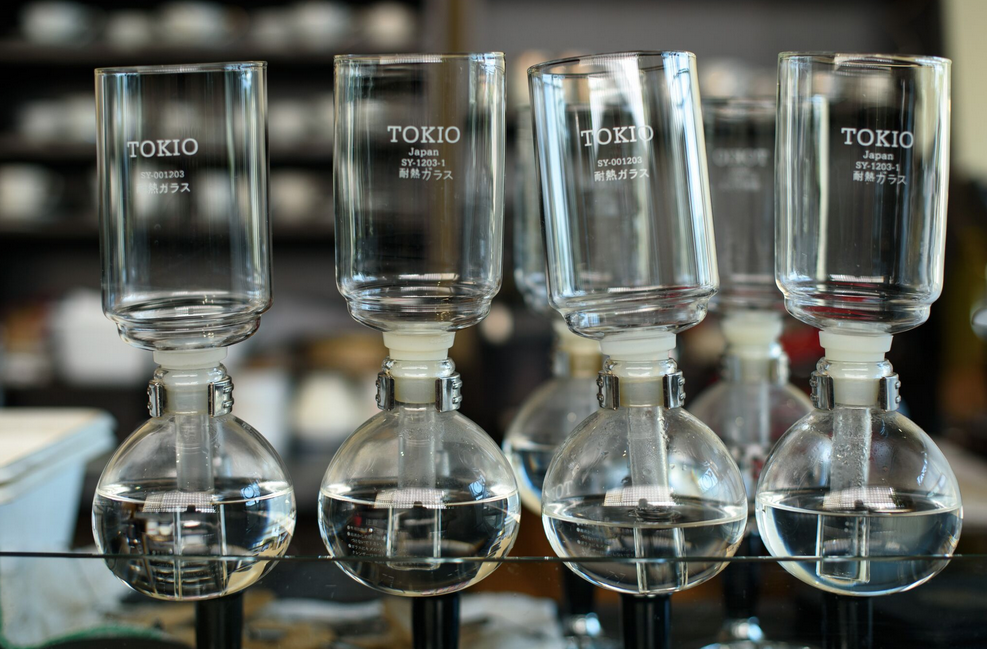
Caffe d’ bolla literally put Salt Lake City on the national map when it comes to coffee. With their multiple awards and Zagat’s rating, everything John Piquet and his wife Yiching do is around the excellence of the coffee. One cup at a time. A truly artisan coffee house featuring seasonal and small batch coffees roasted in-house. Be sure to visit and embrace the experience of one of Cafe d’ bolla’s siphoned brewed coffees. Just don’t ask for it “to go”—this coffee is intended to be sipped on site and at a prescribed pace.
Maverik (185 South State Street)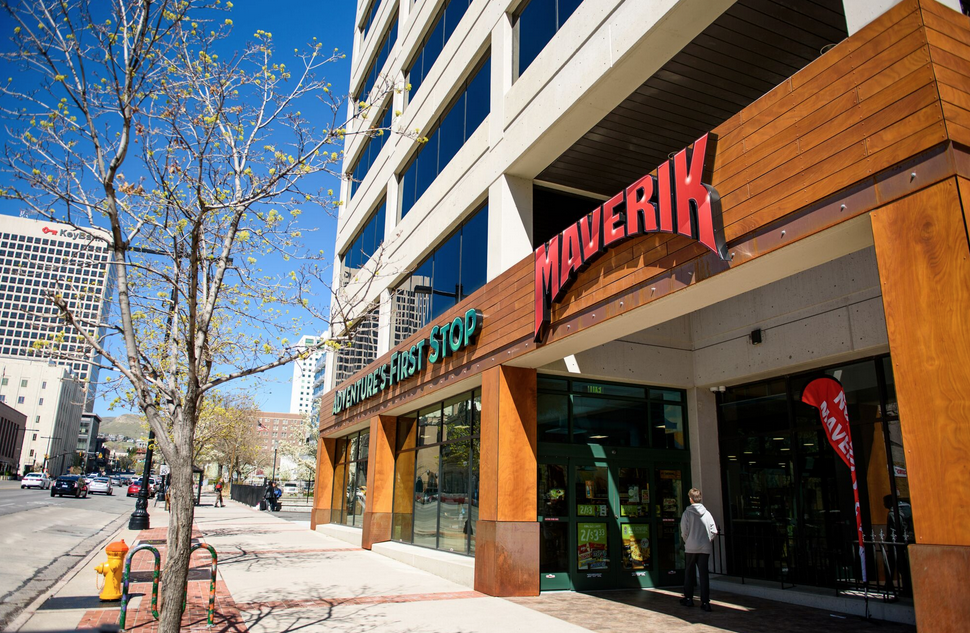
Located at the corner of 200 South and State St., who knew you would find a barista and porcelain cups at a convenience store? Maverik Coffee is the real deal. Full selection of coffee from origins around the world, nitro brew and they even do pour overs!
Beans N Brews (268 South State Street)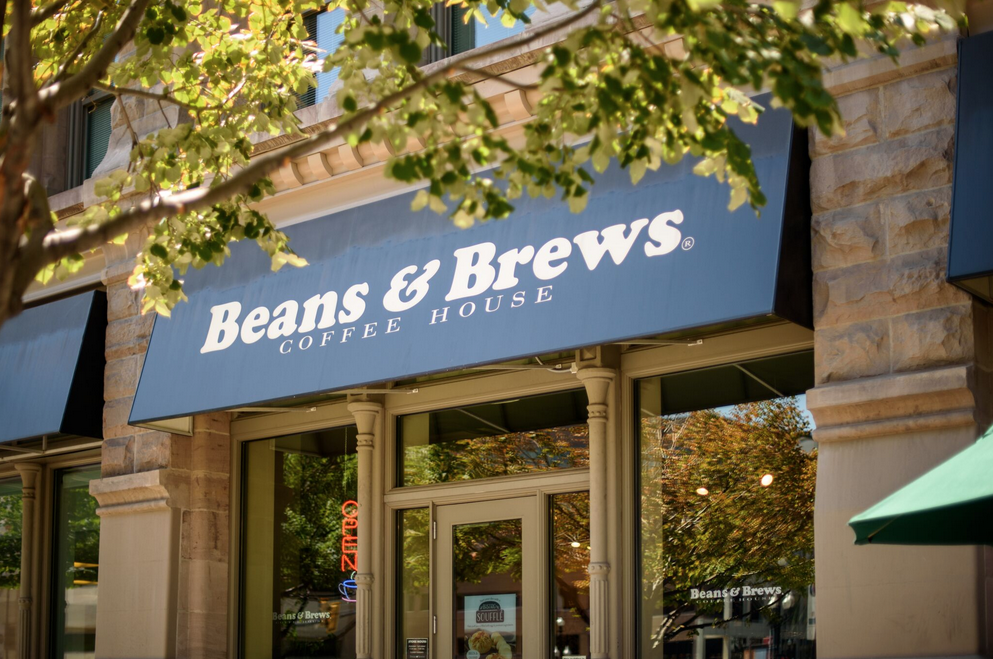
Located near the Gallivan Center a few steps from the corner of Broadway and State, Beans and Brews is known as the home of ‘High Altitude Roasting’. Although according to manager Terry Bryant, this store’s loyal clientele seem to like the sweeter side of coffee. “We seem to sell a lot of Mr. B’s.” Mr. B is a frozen latte mixed with just the right amount of Ghirardelli white chocolate cocoa and Irish Cream.
The People’s Coffee (221 East 300 South)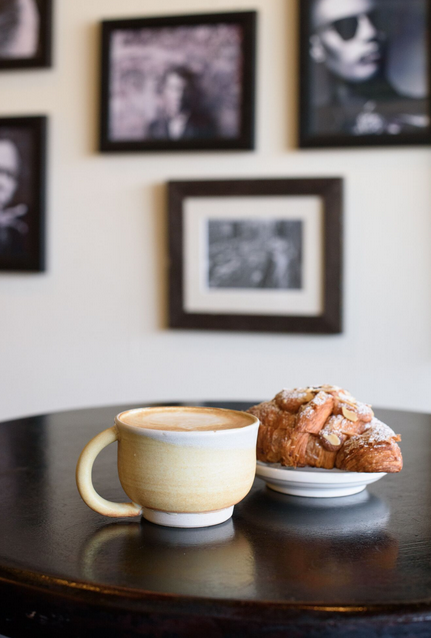
Along one of downtown’s most unique row of shops and storefronts is an ‘intimate coffee’ house: The People’s Coffee. You won’t find anything blended here, but you will get your coffee the way you want it, according to barista Justin Runyan. The People’s Coffee pride themselves on their mochas, in-house cold brew and their commitment to locally-sourced coffee, pastries and bagels. Plus, the portraits of—you guessed it—people adorn the walls.
The Rose Establishment (235 South 400 West)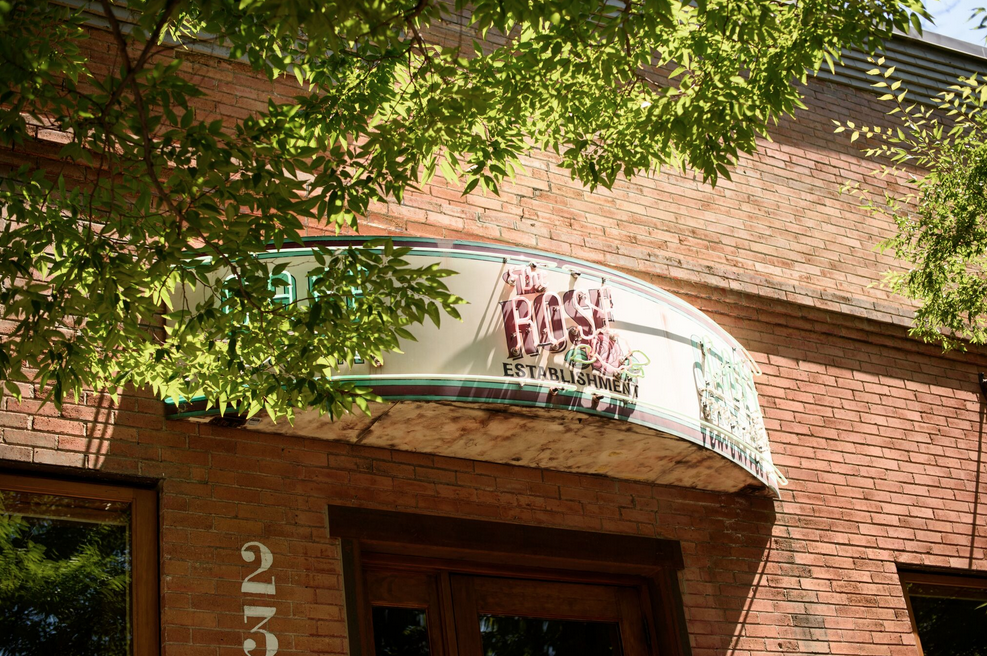
Craving amazing food and baked goods along with brewed to order coffee? Look no further than The Rose Establishment. Owner Erica O’Brien has created something special in this unique location off of 400 West. Try one of their rotating drinks of the week with house-made cashew milk. The coffee is sourced from Four Barrel Coffee, San Francisco, and is one of the most spacious areas to sip your daily brew.
Salt Lake Roasting Co. at the Library (210 East 400 South)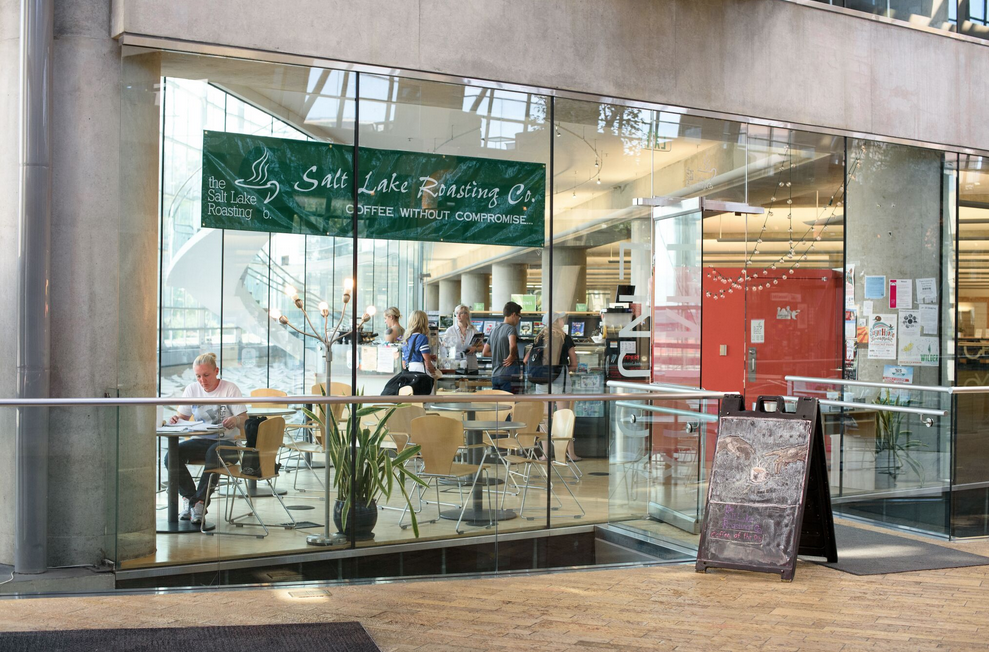
The pioneer of coffee roasting in Salt Lake City, but did you know they have a location in the City Library? Wonder at the amazing architecture of the library, check out a book and enjoy an iced London Fog or a simple black, single-origin roast served up by barista and manager Barbbenly Bergara all in one stop!
Toasters (30 East 300 South, 215 South State Street & 151 West 200 South)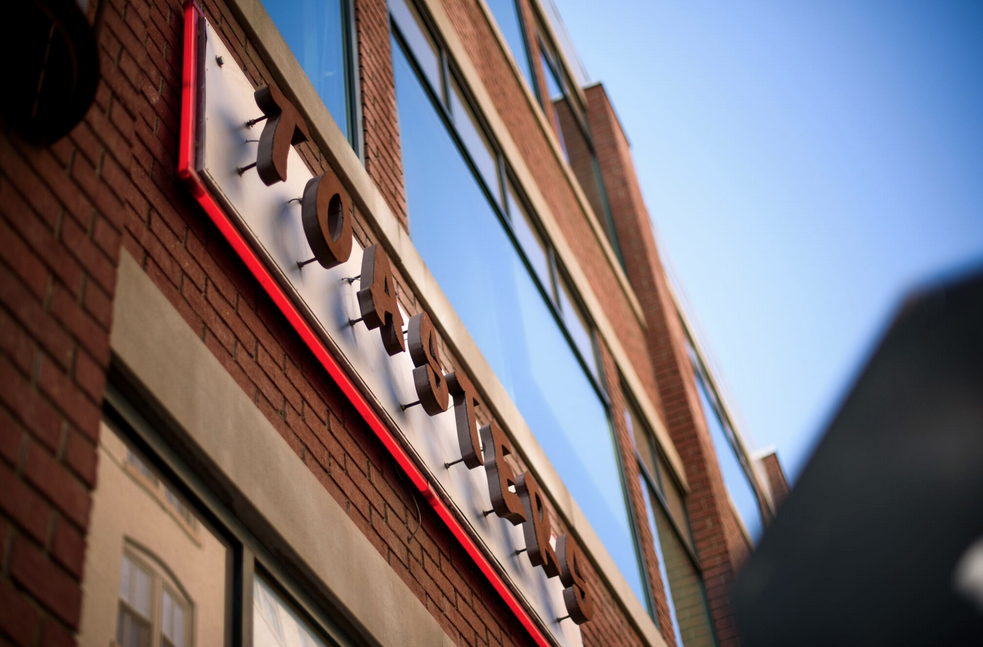
Touting three convenient downtown locations, Toasters is more food-focused with a delicious selection of crafted sandwiches, but it is a popular place for downtown workers to pop in and grab their morning joe. Featuring the world famous Illy brand of Italian coffee.
Dunkin Donuts (217 East 400 South)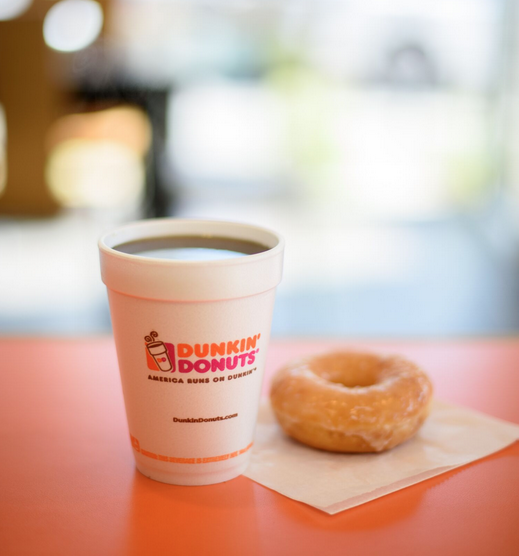
Coffee aficionados may cringe to see Dunkin Donuts on this list, but their coffee just always tastes amazing with a handful of Munchkins donut holes! Millions of passionate New Englanders can’t be wrong, and lines formed down the block when Dunkin opened a few years back. A convenient location near the library TRAX stop on 400 South, Dunkin Donuts is also one of the few downtown coffee places with a drive-through.
Nordstrom EBar (55 South West Temple)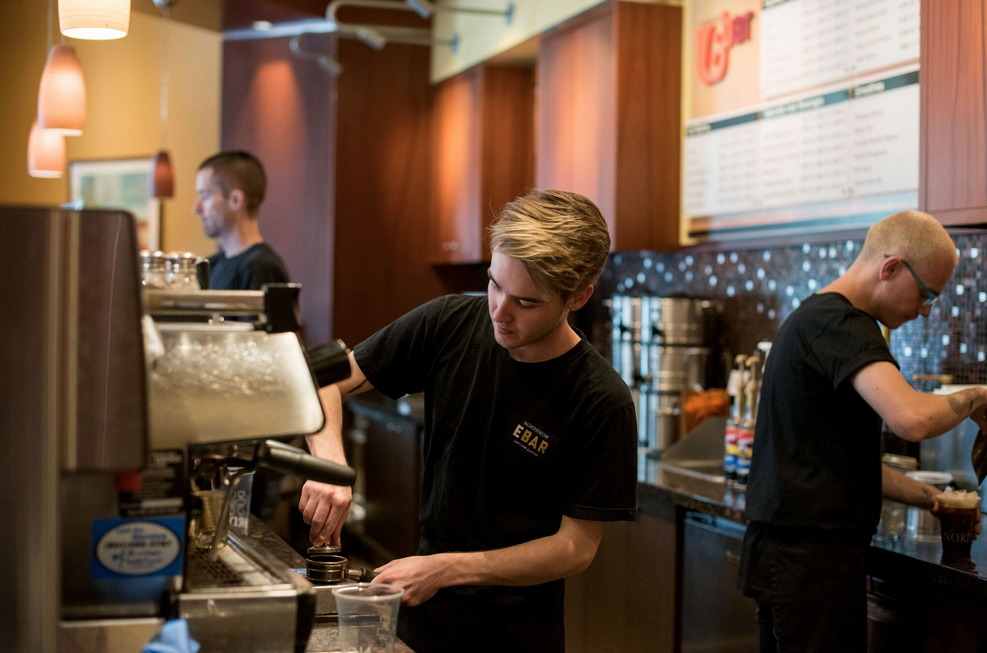
If you find yourself strolling through City Creek Center, shopping bags in tow, you can stop off at Nordstrom EBar located on the center’s west side. EBar manager and barista, Brittany Reed, said, “We try and do everything the best quality we can. We’re innovative, constantly updating recipes and always trying to improve product.” Did you know Nordstrom has their own branded coffee? Grab a cold brew, and shop till you drop.
Starbucks (80 South Main Street)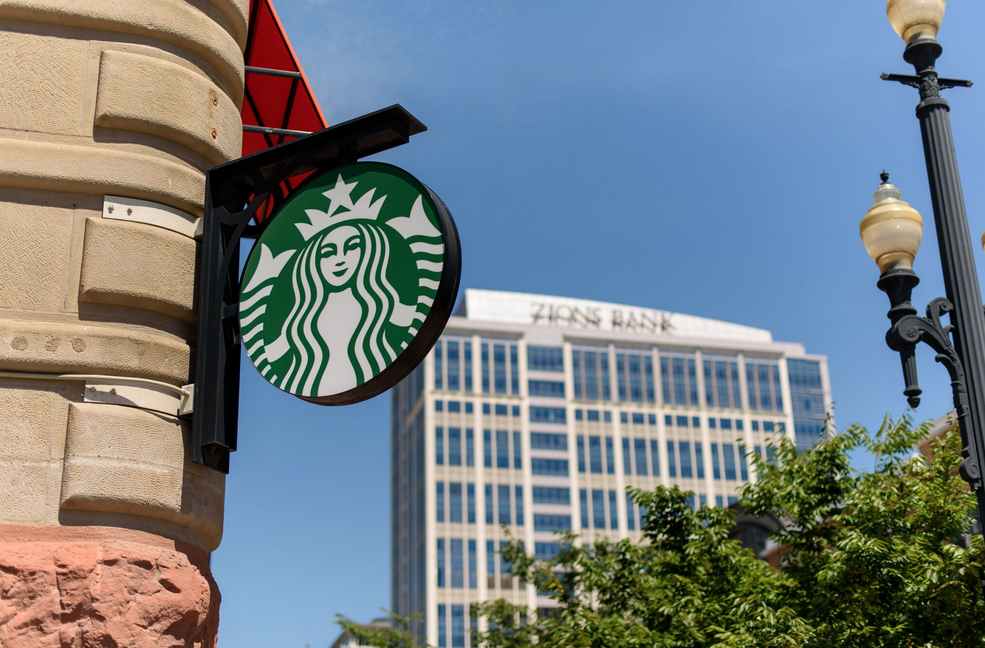
Looking for something familiar? Starbucks also has a location steps away from City Creek Center located on the corner of 100 East and Main St. A unique open space, full of rich architectural details with that familiar menu we’ve all come to know so well. Grande Frappuccino if you like it cold and sweet.
Pouring Local
Craft cocktails have hit their stride in Salt Lake City. Mixologists at restaurants and bars across downtown are pouring daring concoctions that not only utilize local distilled spirits, but also other ingredients. From bitters to herbs and honey to fruit, Salt Lake’s bartenders are topping off their cocktails with local love in every sip.
The Rest
Memento Vida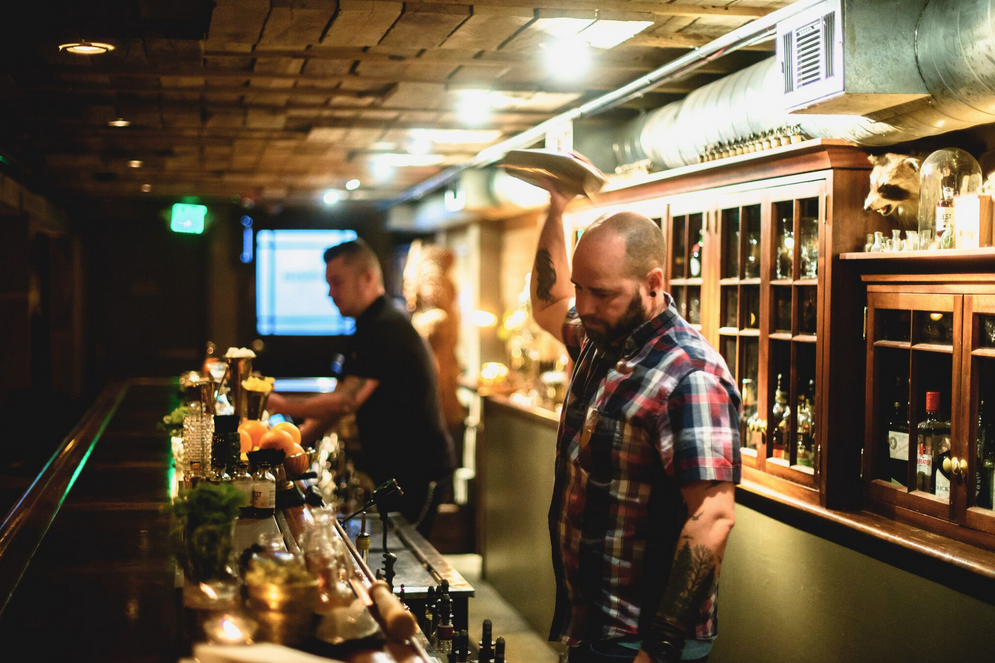
At The Rest, experience Latin and Portuguese flavors and a touch of Utah with Memento Vida—a spring drink based on the daiquiri, featuring local Honest John bitters and Slide Ridge honey.
Creator Ryan Santos uses Leblon cachaça and fresh squeezed lime juice in addition to a tarragon and pink peppercorn honey syrup that brings sweetness and earthy flavors to the cocktail, while a small amount of amaro Montenegro lend butter and nutty tones. “We use crisp and citrusy Honest John Grapefruit Bitters to add an extra push of clean spring flavor,” says owner Sara Lund. And that addition complements the flavor of the lime juice. The Slide Ridge honey brings an earthy sweet note to the overall cocktail and helps accentuate the existing flavors in the cachaça itself.
Under Current
Viola Sour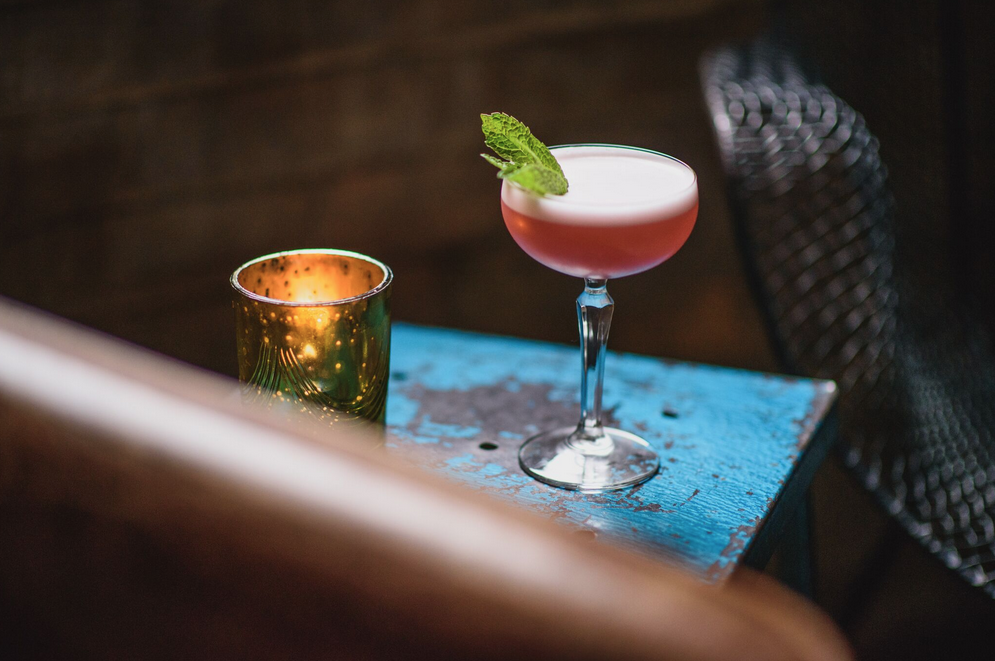
Order up the Viola Sour at Under Current to experience a truly jamming cocktail. The drink features Amour Spreads Concord Grape jam, gin, Campari, egg white, lemon and fresh local mint.
“I love using their jams primarily because oftentimes it is difficult to impart certain flavors into a cocktail seasonally,” explains general manager Amy Eldredge. “There’s nothing better than a fresh concord grape gimlet, but I can only get my hands on the proper grapes for about three weeks in September. Amour allows me to reach for an otherwise unavailable product, while still imparting a fresh flavor profile.”
The fresh mint finish adds a pop of flavor to round out and brighten up the entire cocktail.
Tin Angel Café
Gin Angel Martini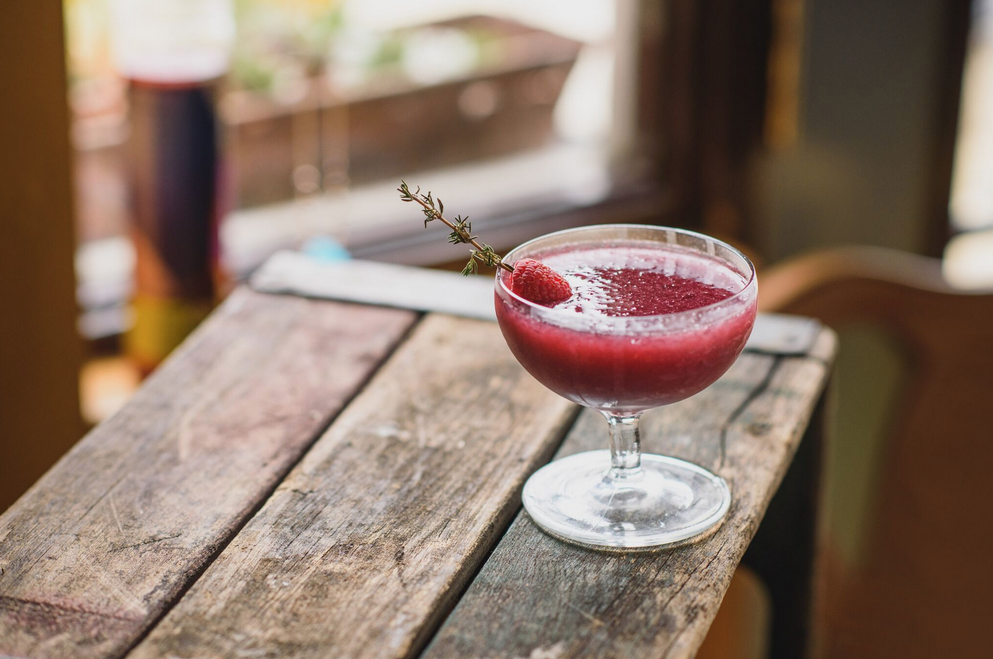
The Gin Angel martini at Tin Angel Café includes several local ingredients in addition to Beehive Jackrabbit Gin. The cocktail highlights raspberry juice from Week’s Berry Farm in Paradise, Utah, that gives the cocktail a beautiful ruby color along with a thyme-infused simple syrup using herbs from Ranui Gardens. It’s garnished with a thyme-speared raspberry.
Tin Angel co-owner Kestrel Spring Liedtke says, “I made a change last summer to our cocktail list and really emphasized local ingredients. I did this partly to support all our great neighbors at the Downtown Farmers Market, but also because local products will always be more fresh and this freshness can help a cocktail really shine. I wanted our cocktail list to reflect the values and priorities that are represented in the food we serve and I wanted the cocktails to stand up to the quality that Jerry puts into his menu.”
Local Shopping List:
Find these ingredients at Boozetique, The Downtown Farmers Market (Pioneer Park, Saturdays June - October)
Amour Spreads Concord Grape
Honest John bitters
Slide Ridge honey
Beehive Jackrabbit Gin.
Week’s Berry Farm
Ranui Gardens

